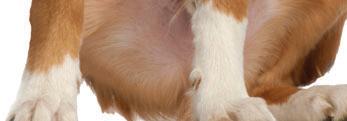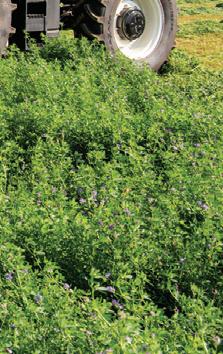


























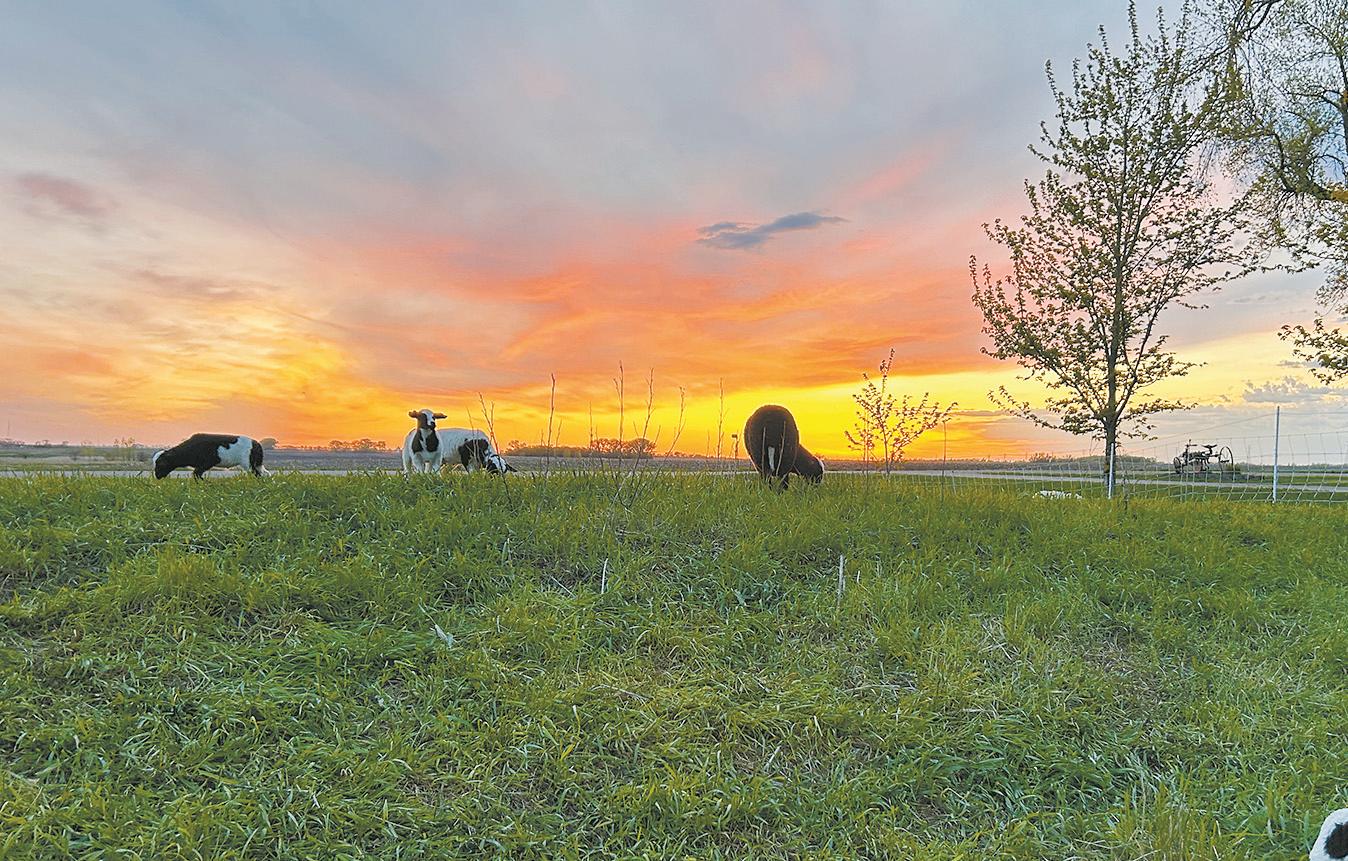
ELBOW LAKE — Preserving the land and keeping it natural is the main focus on Plain Farms owned by Nic and Megan Olson.
“We have a very diverse ecosystem,” Nic said. “It’s getting a healthy system that manages the ups and downs.”
On the farm, all of the animals — cows, chickens, hogs, horses and sheep — are grassfed and pasture raised. The Olsons work closely with the Minnesota Agricultural Water Quality Certification Program, where they are certified.
Jim Lahn, Area Certification Specialist for MAWQCP, worked with the couple to help them achieve their certification. To be
certified, land owners must agree to a field review which looks at a farm’s crop rotation, manure application process, erosion rate, buffers around waterways and more.
“We appreciate the good things they are doing to protect Minnesota’s water quality,” Lahn said. “A majority of their farm is in perennial pasture. That’s not the typical situation for farms in that neighborhood.”
Coming to the conclusion to convert their farm to pasture and raise their animals on it came with a lot of research.
“We had cattle at the time and I was doing the math on how much nitrogen we would need to plant corn and our intention originally was to do everything with on-farm input,” Nic said. “When I did the math, the amount of manure we’d
need required we have 17 years’ worth to get one crop of corn.”
With the decision made, the couple had a lot of work to do.
“You need totally different infrastructure for (pasture), a lot of fencing and a lot of acres fenced in,” Nic said. “We are always trying to build infrastructure that doesn’t have concrete or a huge investment. We start with something, prove it works and build from there.”
Having water in all of the different pastures was one of the challenges they faced since they moved their cattle every couple of days.
“It’s really nice to just turn them out and they take care of the grass and then

we move them and the grass grows back,” Megan said.
The Olsons are also members of the Sustainable Farming Association and participate in DriftWatch, a communication tool that allows farmers, hobbyists and pesticide applicators to work together, to
Olsons page 2







Published by
Star Publications
Copyright 2024
522 Sinclair Lewis Ave. Sauk Centre, MN 56378
Phone: 320-352-6577
Fax: 320-352-5647
NEWS STAFF
Sarah Colburn, Editor
sarah.c@star-pub.com
Tiffany Klaphake, Assistant Editor tiffany.k@dairystar.com
Sara Eisinger, Writer
sara.e@star-pub.com
Emily Breth, Writer emily.b@star-pub.com
Carol Moorman, Writer carol@melrosebeacon.com
Natasha Barber, Writer natasha@saukherald.com
Ben Sonnek, Writer ben.s@saukherald.com
Hans Lammeman, Writer
hans.l@star-pubs.com
Alex Middendorf, Contributing Writer
Story ideas send to: sarah.c@star-pub.com
SALES STAFF
Robin Brunette, 320-293-5911
robin@saukherald.com
Missy Traeger, 320-291-9899
missy@saukherald.com
Tim Vos, 320-845-2700 tim@albanyenterprise.com
Mike Schafer, 320-894-7825
mike.s@dairystar.com
Neil Maidl, 320-292-4454
neil.m@star-pub.com
Jaime Ostendorf, 320-309-1988
jaime@star-pub.com
Bob Leukam, 320-260-1248
bob.l@star-pub.com
PRODUCTION STAFF
Amanda Thooft
Nancy Powell
Maddy Peterson
Cheyenne Carlson
Karen Knoblach
Annika Gunderson
Nadiia Zalitach
Deadlines: Country Acres will be published the first Saturdays of April, May, June, September, October and November, and the third Saturday of every month. Deadline for news and advertising is the Thursday a week before publication.
ISSN: Print 2834-6440 Online 2834-6459
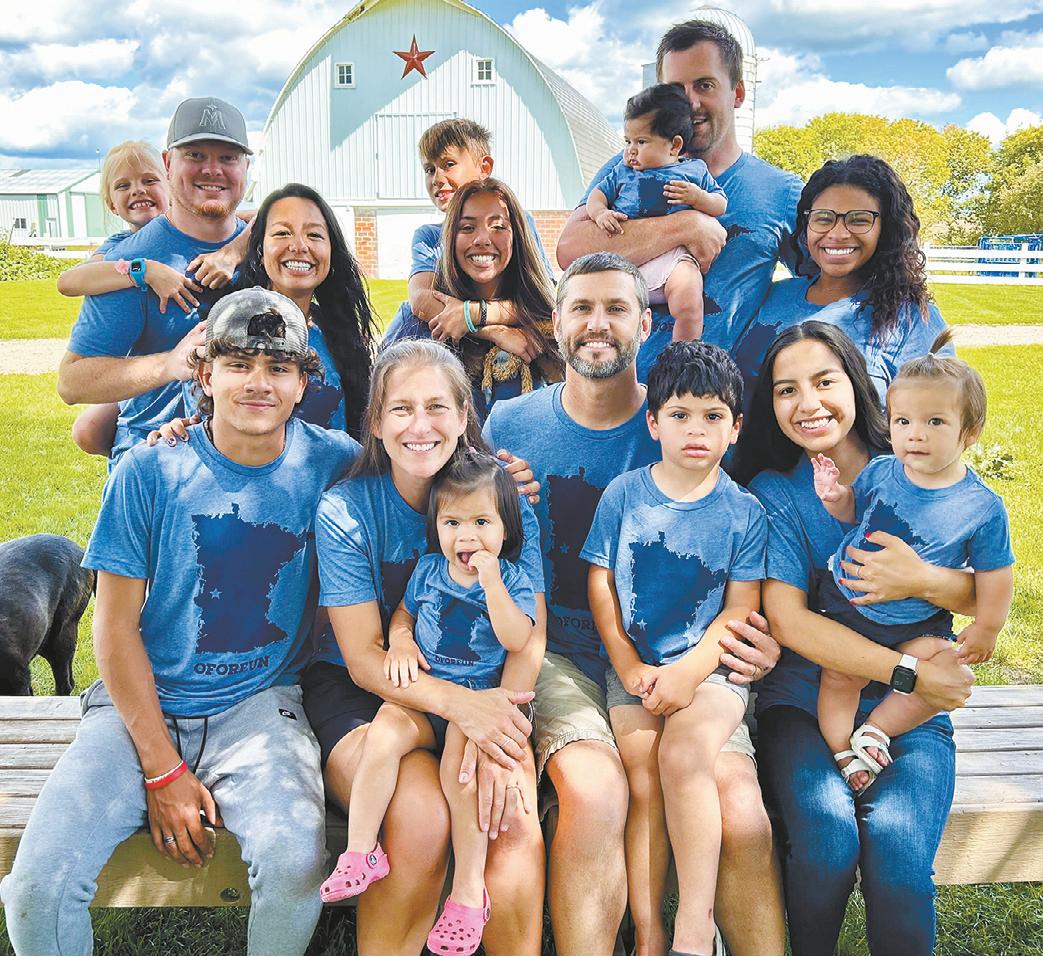
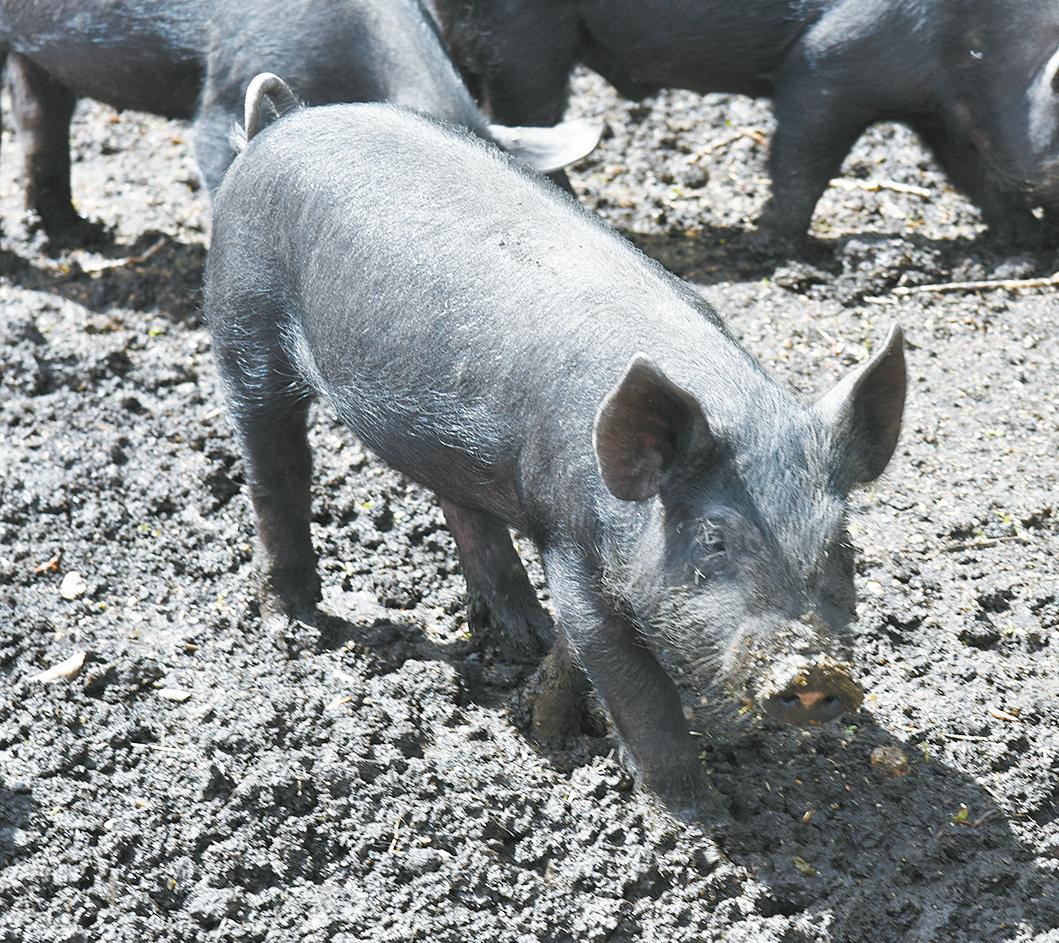
minimize chemicals drifting onto their property. They also work with the Natural Resources Conservation Service and have a Climate Smart Farm Endorsement which recognizes producers who implement practices
to reduce greenhouse gas emissions and sequester carbon.
“My great-grandpa bought the first 120 acres in 1915, and another 80 acres about half a mile away that was a big wetland,” Nic
said. “The next year, he hired a company and they dug a big drainage ditch and then it was farmland. We are considering restoring that, we are trying to restore some wetlands that would allow more water to stay on farm.”
The couple said their incentive is to continue to restore what was naturally on the farm. There are currently 12 restored wetlands on the farm.
“In the past 100 years, many ditches were dug in
order to drain these wetlands,” Nic said. “In 2008, we hired an excavation company to build dikes across these ditches to restore the prairie pothole wetlands.”
With restoring wetlands, they are creating retention ponds so water absorbs into the land. They are also working toward water retention with their choice of crop.
“We have 230 acres and we are transitioning it all back into grazing land,”
Olsons page 3

Publications bli ti “The newspaper of today is the history of tomorrow.”
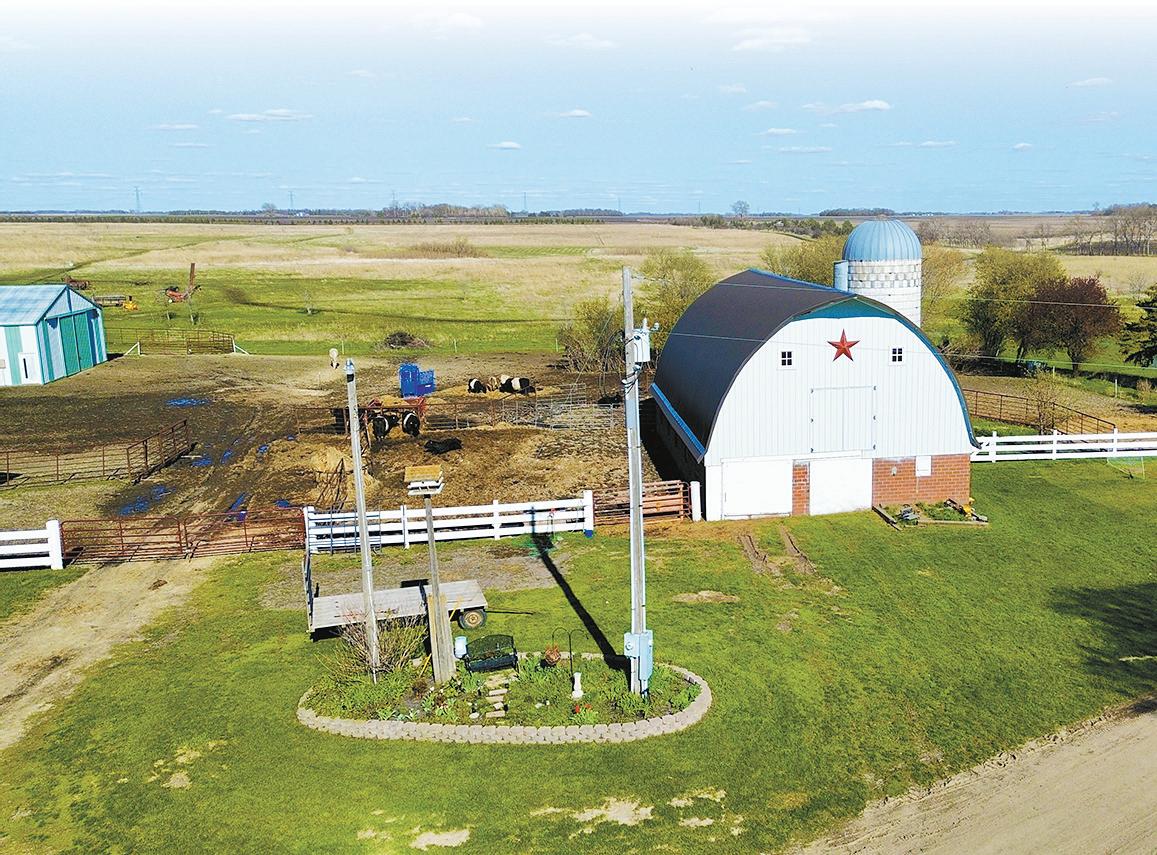
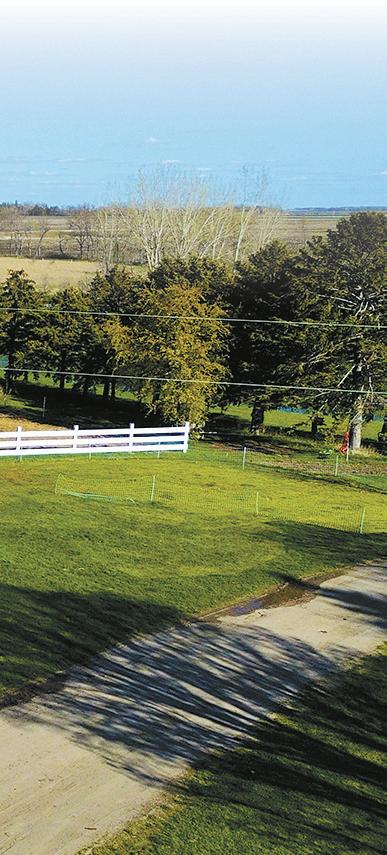





















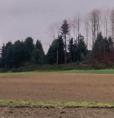

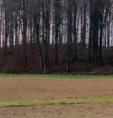













• Upgraded heating & AC system offers 5 different air flow settings
• 1500cc engine puts out 110 HP and 105 Lb.-FT torque
• 3,500 lb. of towing capacity
• 1,500 lb. box capacity & 50% larger box volume than full size UTVs
• Steel drive transmission
• 6,000 lb. winch


Megan said.
Nic said switching the land over from crops to organic grassland was easy. Their land is all part of the Conservation Reserve Program through the United States Department of Agriculture
ing the health of environmentally sensitive land and removing it from agricultural production.
“My father-in-law (Loran) who lived here before us worked for the soil and water conservation district and he’s always been quite a conservationist at heart,” Megan said. “The tree line around the farm he planted with elderberries, chokeberries and chokecherries, things you could (utilize).”
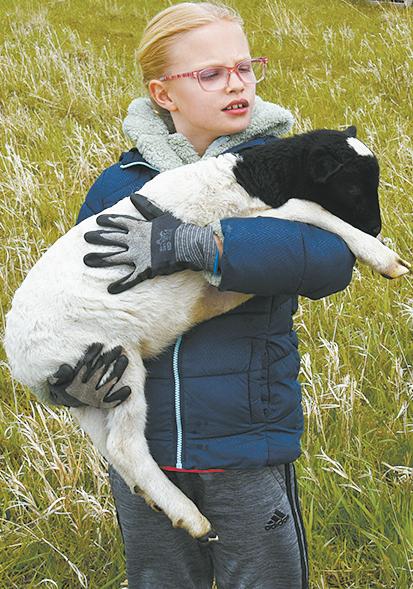
Moving forward, they plan to continue restoring and using their land in the natural way.
May 7 at Plain Farms near Elbow Lake. All of the animals are grass fed and out on pasture during the months weather permits.
“That’s one of the fun things about homesteading and growing your business — you can try something out and see if you want to keep going that direction or try something else,” Megan said. “It’s been fun to learn about different things. It’s a labor of love.”







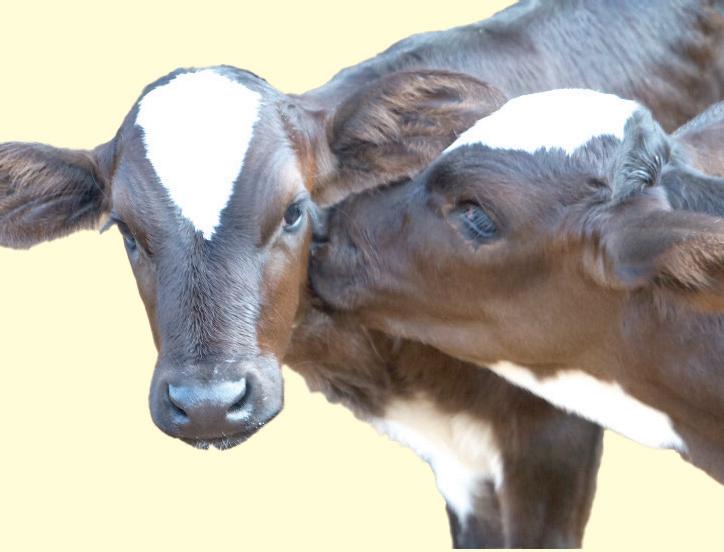








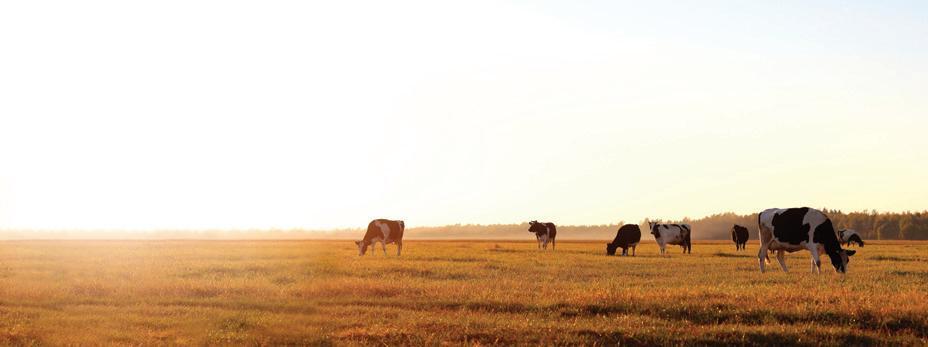





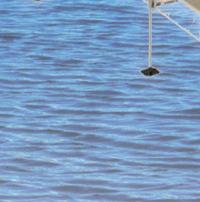
























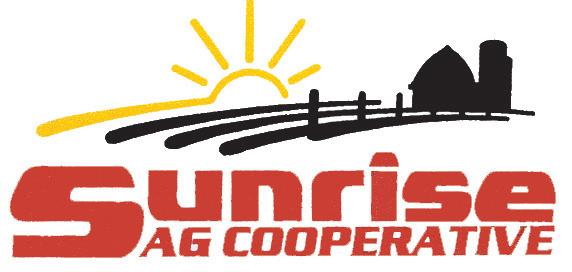


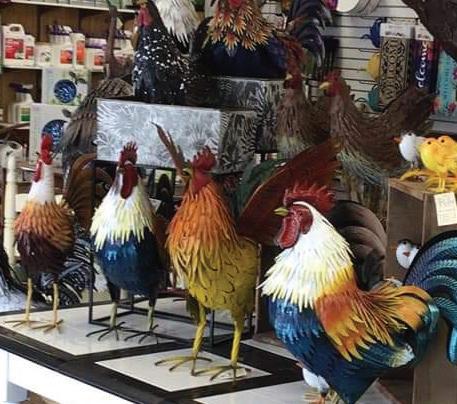









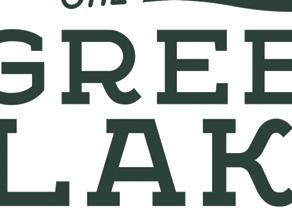









ALBANY — Selena
Corona always had a passion for dairy, and even though she did not grow up on a farm, she did not let that discourage her from becoming a dairy princess.
“I have wanted to be a dairy princess since I was 16 and my friends were going through the dairy princess program,” Corona said. “I just didn’t realize I could do it myself.”
As a first-year Stearns County Dairy Princess, Corona was named a Princess Kay of the Milky Way finalist. As she continues
her journey, she has many beliefs in what the dairy princess program, and the girls, can accomplish.
“Dairy princesses are able to connect with consumers on a deeper level,” Corona said.
“Consumers may have questions about the dairy community, but maybe they don’t know a dairy farmer or it is intimidating for them to walk up to a farmer and ask them themselves. Being kind of a dairy expert ourselves, it is easier for us to bridge that gap between dairy farmers and consumers.”
Along with informing consumers, Corona believes dairy princesses are able to show how important dairy




Three young women from the 10-county Country Acres coverage area have been named finalists for this year's Princess Kay of the Milky Way competition.
is to include in an everyday diet.
“Dairy princesses have a very strong ability to have people incorporate dairy into their diet more than they did before,” Corona said. “With the information we know and are able to share with them in ways … it influences consumers … dairy is important and I think it will make a positive change.”
Another message Corona prioritizes is the dedication farmers have toward their animals.
“Dairy farmers care strongly about their animals,” Corona said. “They do a great job at taking care of them every day and they are like part of the family.”
Corona has many people she looked up to and followed throughout her life that led to where she is now. This includes family and friends alike.
“Two of my sorority sisters were my biggest supporters,” Corona said. “They were dairy princesses in their own county and ran for Princess Kay themselves. Once I told them I wanted to go through with this and I was really excited about it, they were very supportive




and kind of told me about the process and their experiences and that really helped me through the steps along the way.”
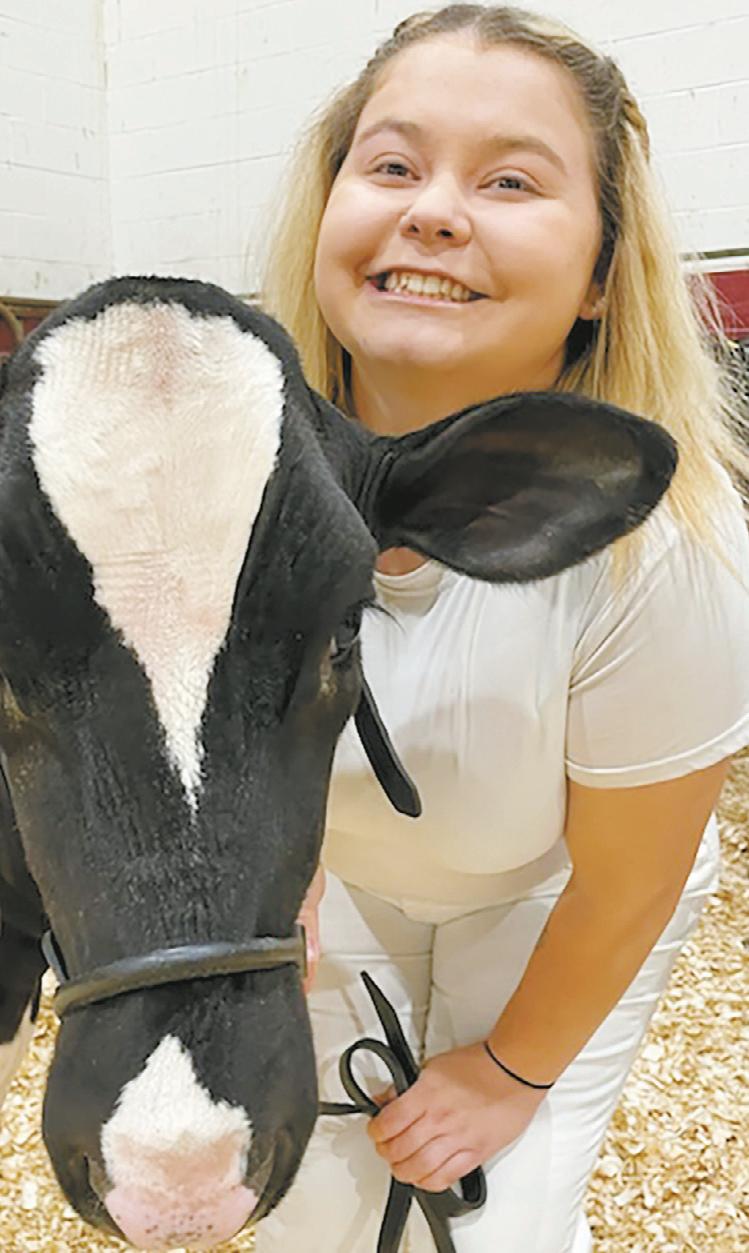
From visiting her uncle’s dairy farm to helping on friends’ dairy farms in high school to finding encouragement throughout college, Corona learned a lot and is now working on a dairy farm. With all of her experience and excitement about the dairy community building up over the years, she finally took the leap to run
for dairy princess.
“Last year, I saw the opportunity for dairy princess again and thought if I can work on a dairy farm, I can do this myself,” she said.
















































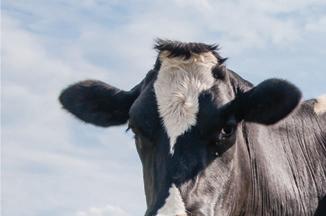





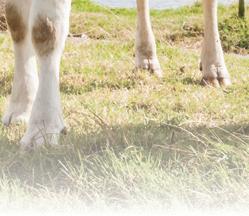
















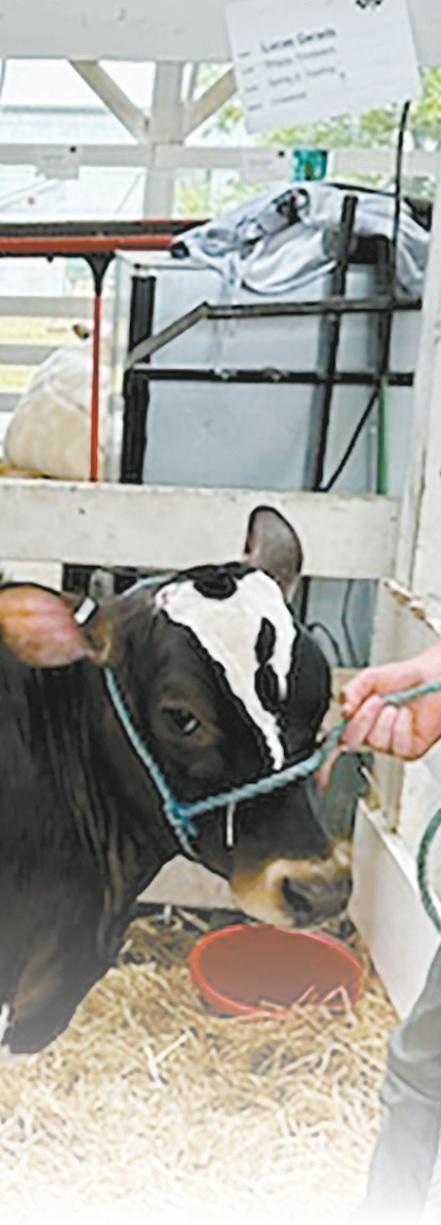







 BY EMILY BRETH STAFF WRITER
BY EMILY BRETH STAFF WRITER
UPSALA — Paige Gerads, daughter of Jamie and Rebecca, has spent her life as the third generation on the family farm and has taken on the role of dairy princess for Morrison County.



“I ran (for dairy princess) because my grandma and my dad (encouraged) me a lot,” Gerads said. “We also had an inspector who said I should run.”
After years of gaining dairy experience, Gerads is able to share her story with a smile and a crown. This year, Gerads was also named one of 10 Princess Kay of the Milky Way finalists.
“Princess Kay came to my classroom when I was really young and I thought that was the coolest thing ever,” Gerads said. “She was talking about dairy cows and grew up just like I did, and she was wearing a dress and crown in my classroom making ice cream.”
While advocating for dairy farmers, Gerads wants to ensure people know the amount of work put into the farm.







“I don’t think people realize how much time, effort, tears and sweat that goes into the production of dairy products,” Gerads said. “They think dairy farmers can call
out of work and not milk the cows. But someone has to milk the cows everyday twice a day — there is no getting out of it.”
Gerads knows this firsthand, as she and her brother would be out in the barn every morning before school and in the evening to do their chores. She also sees her dad’s commitment to the farm.
Another message Gerads is passionate about sharing is the safety of dairy foods.
“Getting more into my dairy princess role, I have to talk more about the safety of our milk,” Gerads said. “Products we use don’t harm anything we produce and the pasteurization process keeps the nutrients.”
Being the third generation on the farm, Gerads had many role models to look up to while growing up.
“My grandparents built our barn we are currently using in 1971,” Gerads said. “My dad took it over after high school and my grandparents moved to town. I grew up with my grandparents around all the time. I would follow my grandma around during chores. As I got older, my dad involved me more in the milking.”

With encouragement from her family, and the dairy princess coordinator for Morrison County, Gerads made the decision to run her junior year of high school. Now, she gets to be the princess with a dress and crown talking to the community.
“Dairy princesses can get a lot more attention from the younger kids and start their interest in the dairy community a lot earlier,” Gerads said. “We can also reach a bigger audience.”
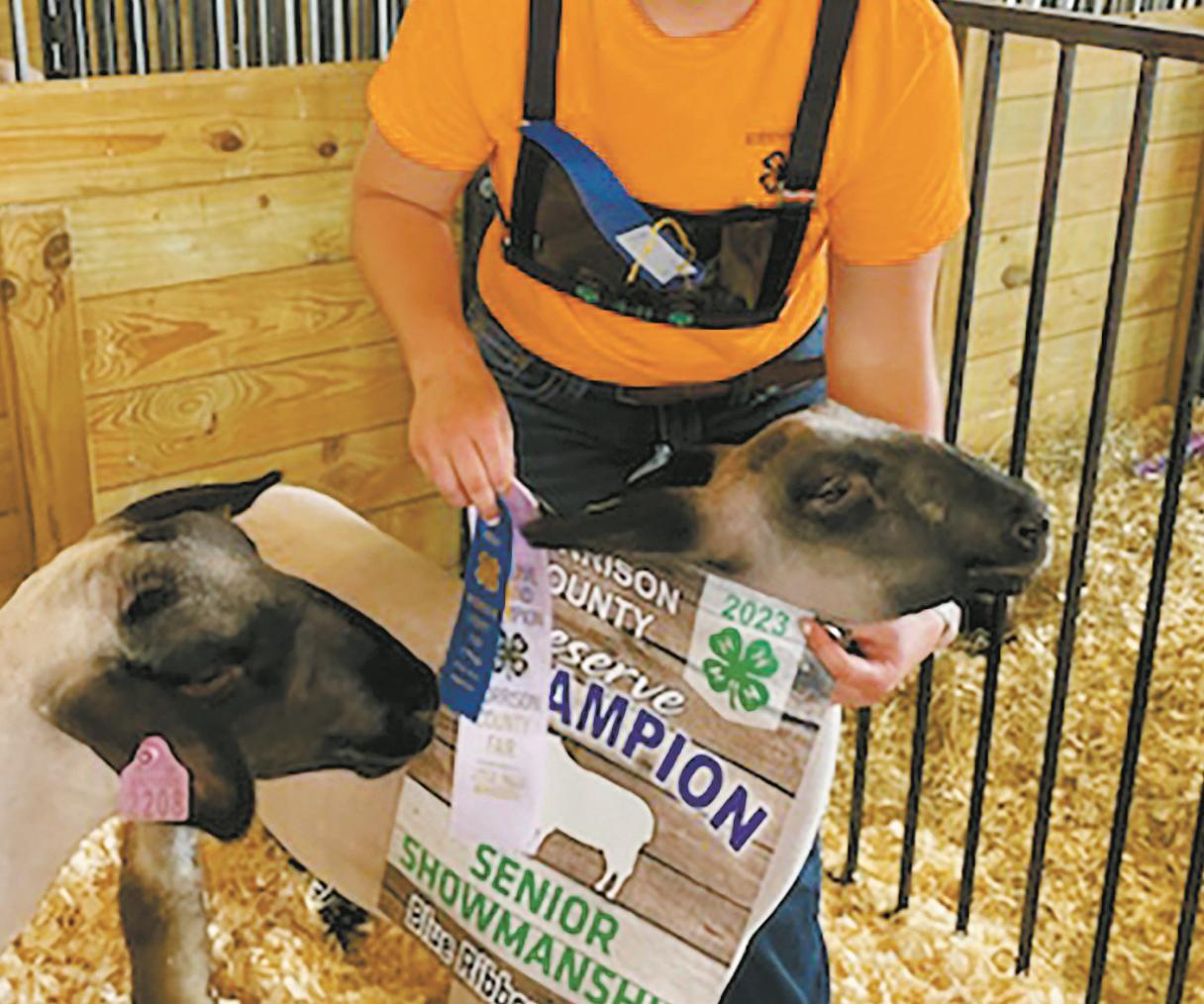
Gerads enjoys being a part of the dairy princess program and knows it has many benefits. “It shines a more positive light (on the dairy community),” Gerads said. “People are always happy and curious.”
Paige Gerads stands with a show goat in June of 2023 at the Morrison County Fair in Little Falls. Gerads had a lot of encouragement from her dad and grandma to run for dairy princess.
I am back! I know most of you never knew I was temporarily out of the office, taking some time off to be with the newest addition to our family, Madison Klaphake.


Madison was born the end of March and the last two months have flown by. We all are adjusting to our new routine to once again have a newborn in the house. Allison and Carson adore baby Madison and jump at every opportunity to help take care of her. Jason helps by holding her when he has a chance and by taking Allison and Carson out in the tractor with him so I can get other tasks around the house done — or take a nap.
By Tiffany KlaphakeTime is a funny thing. When I was pregnant for nine months with my firstborn, it felt like forever, then I closed my eyes and she was 9 months old. I closed my eyes again and I was pregnant again with our son. I closed my eyes again and he is walking and talking. I closed my eyes again and we were about to have our third child. Now, we are a family of five with all three kids under the age of 4.
With each child, while I was home on maternity leave, I had this big list of stuff around the house I was hoping to get done. Nothing crazy, like remodel the bathroom; more like try a new hobby. While I was home this time around, it was plant a garden. I grew up gardening and canning with my mom so, naturally, I wanted to continue this practice. However, there were several things that prevented me from getting it done. I tried to plant one before, but it ended up being too much in the shade and did not grow very well.
First, there was not an obvious place to plant a garden at our farm as there was not one already established, and any area of grass not right next to

the house would often get driven over by machinery. Second, we have several apple trees in our back yard and a patch of trees behind the house, which causes half of the yard to be shaded. The apple trees and a swingset take up the majority of the yard that is sunny.
This spring, I was determined to find a spot to make a garden. After much planning and conversation with Jason, we figured out a spot that should work. Jason had cleared some dead trees earlier this spring and that opened up a section in the patch of trees behind our house. I might finally have a garden.
The second step in this process was the actual planting of the seeds and seedlings. While this sounds simple, just remember I now have three children under the age of 4 with me. Allison and Carson love being helpful but, often, their helpfulness leads to more work. It took several weeks to get it done, but I am happy to report that I have about a 10- by 20-foot garden planted. Nothing has sprouted yet, so I am still waiting to see if my efforts are going to pay off.
In the meantime, while I wait for my plants to grow, I get to watch my children grow. Even though we just had our third child, it still changes my perspective. Prior to getting married and having kids, I had so many lofty goals and ideas. Now that I am married with children, I am happy to plant a garden with my children running around in the background. Sometimes, they fight over who gets to water the plants or whose turn it is to put the next potato in the ground. Having kids around can help make even the most mundane tasks fun (or drive me crazy). So, our house is a little crazy at times, but I would not trade it for anything.
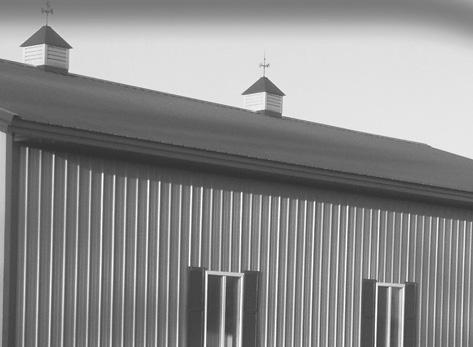















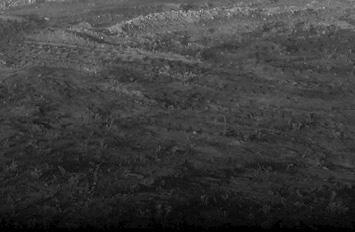
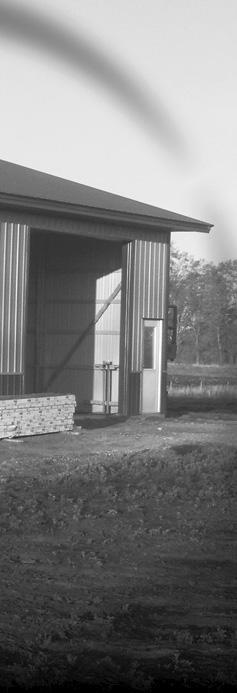





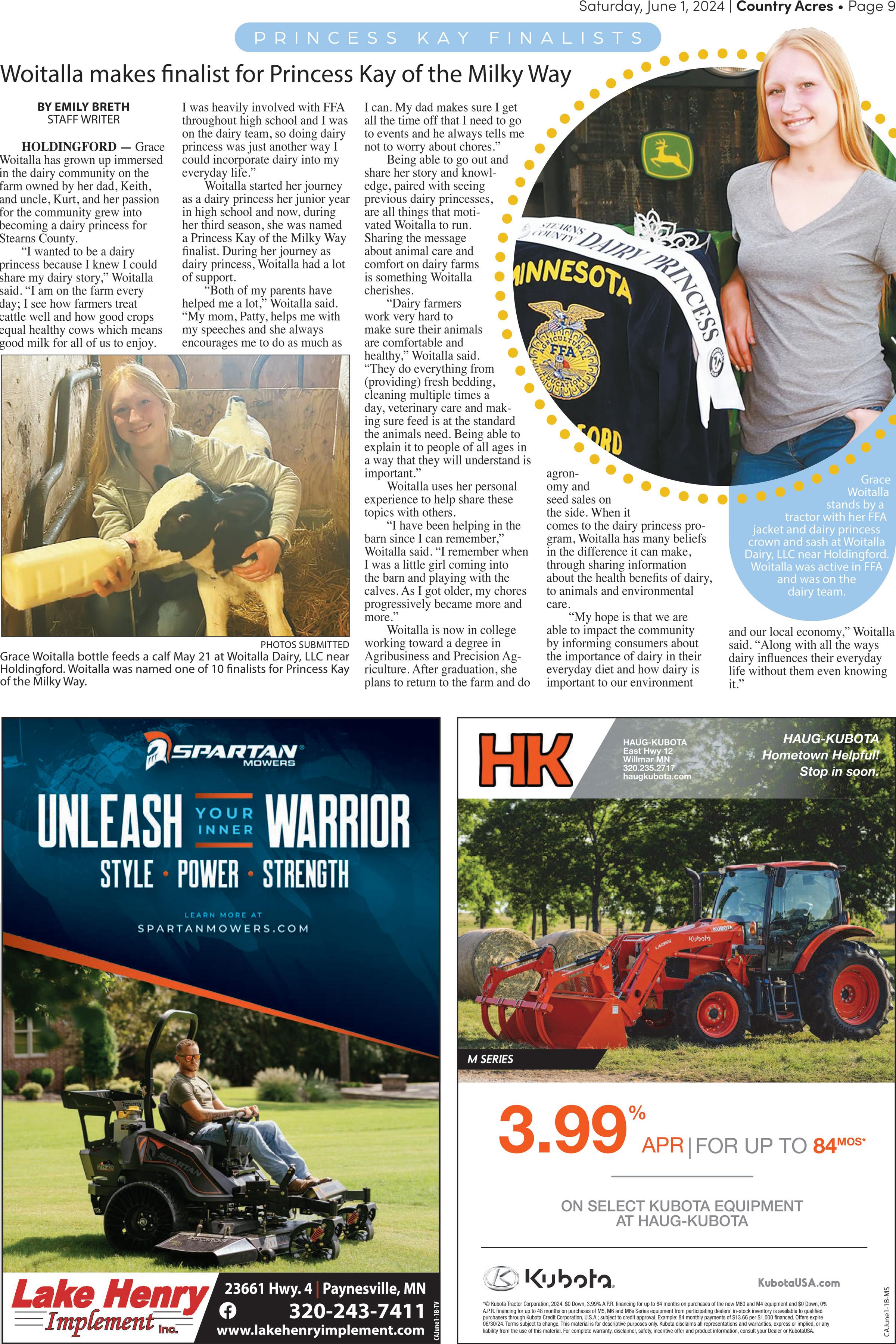


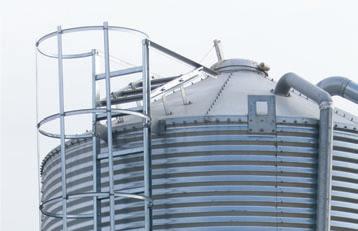




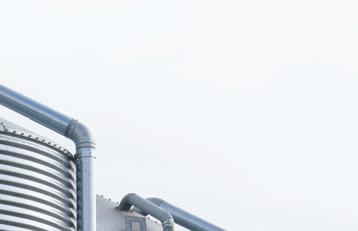












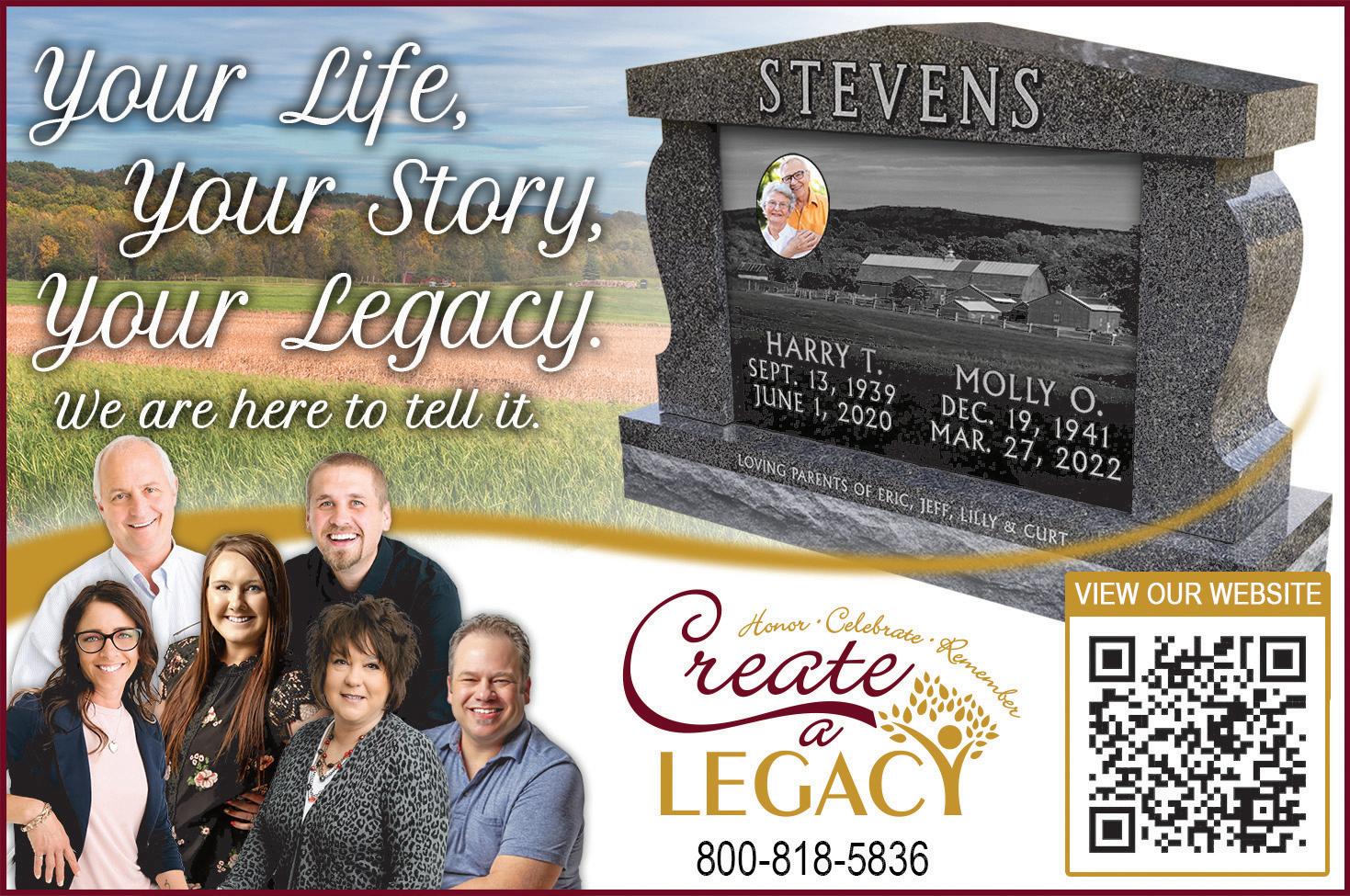



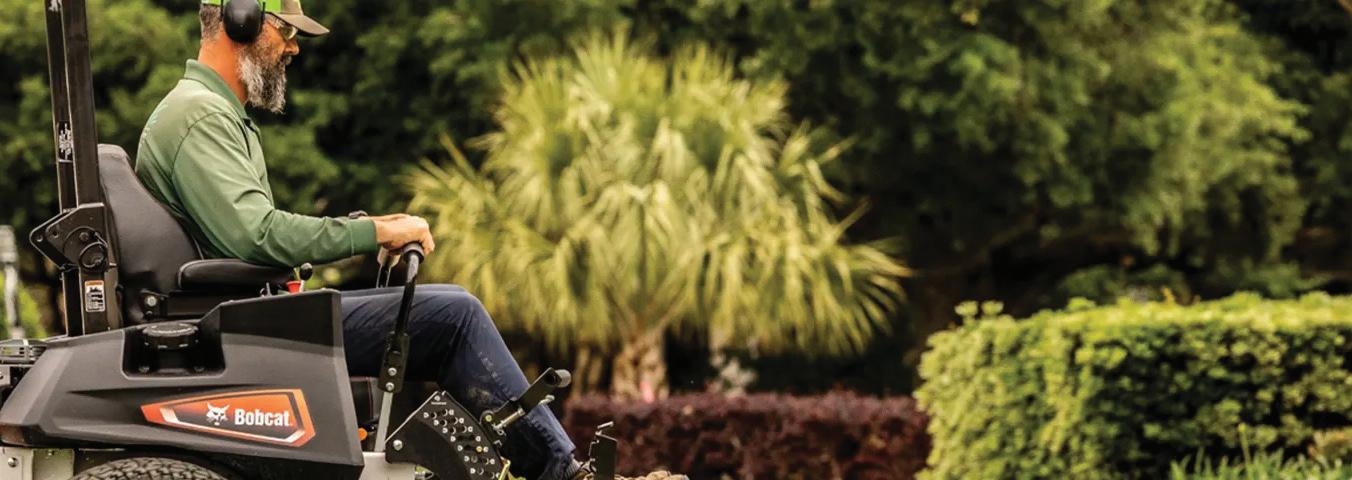





























































Beyond deer, fish and birds, Johnson has also worked with bears, squirrels, fishers and a guinea pig.
Johnson has always been interested in wildlife and the outdoors beyond simply preserving it. He does some hunting himself, but he also gets an up-close look at nature by feeding deer, which helps inspire his taxidermy projects. One of the friendliest deer he ever knew would eat right out of his feed bucket and let Johnson pet it.
“My favorite hobby is the wildlife around here,” John-
In 1978, Johnson attended John Rinehart Taxidermy School in Janesville, Wisconsin; it was a three-month course, designed to get students introduced to the basic principles of taxidermy, including birds, fish, deer heads and bear rugs.
Johnson set up his first shop in Willmar and stayed there through the 1980s; at the time, it seemed like every other person he knew was unemployed, so he said he was glad to have his job. He then moved Mid-State Taxidermy to Spicer in the 1990s and, in 2000, he moved the business again to his home in the country. He has not regretted it. “It’s much simpler to have it at home, not running back and forth all the time,” Johnson said.













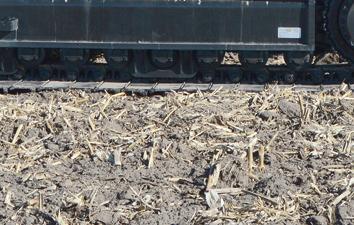





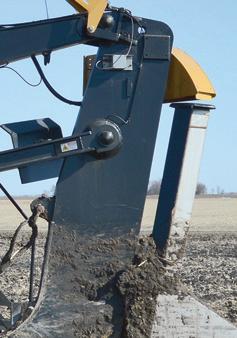
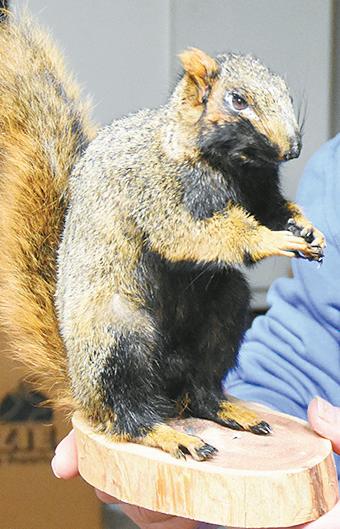
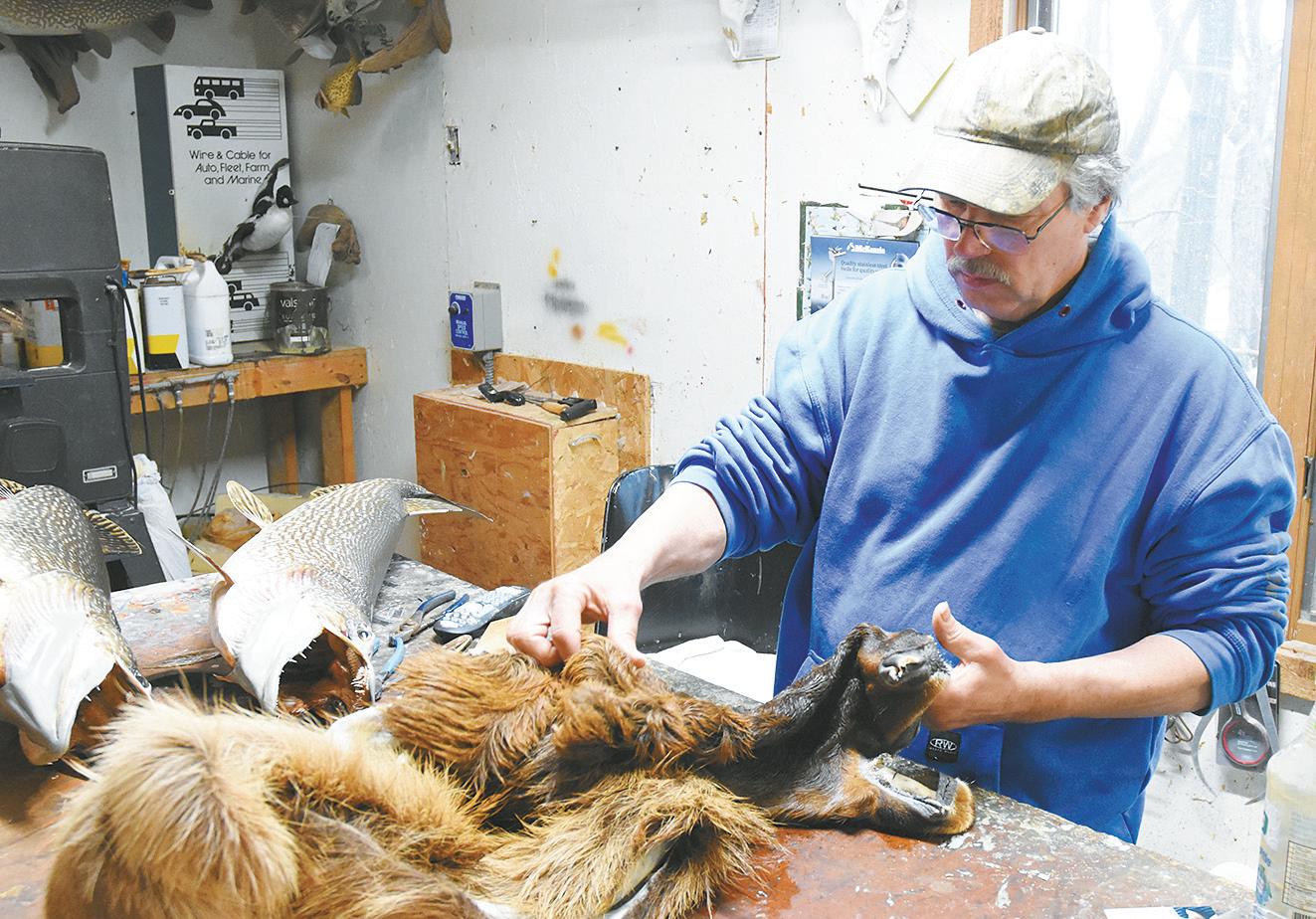
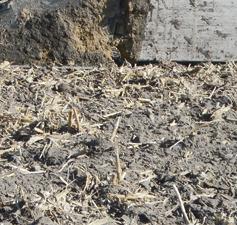
Greg Johnson shows the stitching on a pike mount May 2 in his home shop near Spicer. Johnson used to use a balloontype form covered in paper mache, but he switched to foam forms later in his career.
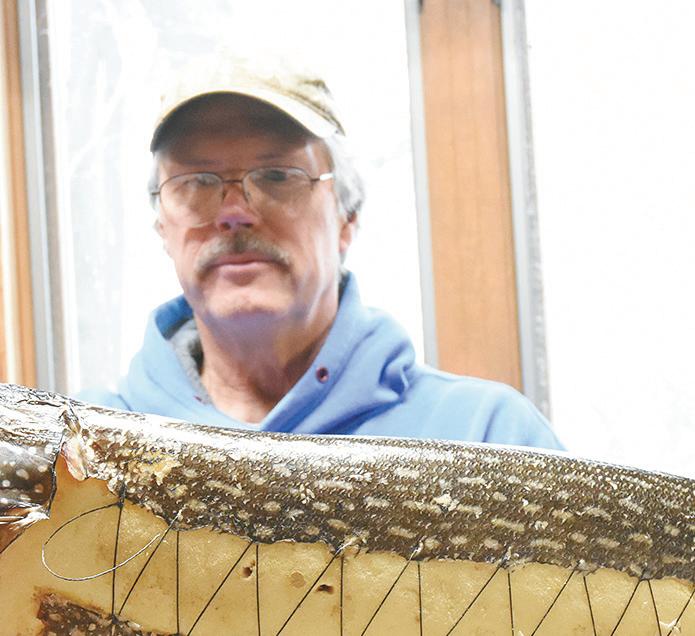

Johnson from page 12
Johnson has improved his craft by looking around the industry to see what other taxidermists were doing.
“I totally changed the way I did fish once,” He said. “We were taught to put this sack body inside them, cover the whole inside of the fish with a mache and then mount them that way. Then, I saw what the really good taxidermists were doing. You carve your own body out of foam, one solid body, and they’re much lighter. The others were heavy like a brick with all that paper mache.”
The evolution of the trade also improved Johnson’s craft. While there was a limited variety of taxidermy forms 40 years ago, there are now more varieties and materials to fit the catch. Even so, it is not often Johnson has a form that perfectly fits a skin, so he has to carve and shape the form himself.
Most of Johnson’s projects are handled in four to six months, although he tans many of the deer hides himself for a faster turnaround. If he receives a project in the fall, it will take roughly until mid-January to finish the preparation work on the hide, which includes skinning, salting, washing, freezing, shaving, tanning, pre-fitting to a form and re-freezing.
Some projects take longer, such as a couple of bear half-mounts; he sent those to a commercial tannery before working on them.
“By the time (a hide) is tanned, that’s about half the work,” Johnson said. “I’ll mount a deer in a day once the hide is tanned and ready, and there’s a bit of finish work after that, a little touch-up and painting.”
Fish and birds do not need tanning, so Johnson preserves them with borax. He backs the fish fins with chipboard to strengthen them.
With birds, Johnson could order replicas for their skulls and bills, but he prefers to use the originals. After cleaning the skin and feathers and rolling them in borax, he blow-dries the feathers to fluff them up before the mount is assembled.
“They can last an amazingly long time,” Johnson said. “Some bird skins, you can almost see through them, they’re so thin.”
Painting is often needed to bring
some mounts back to their natural col-or.
Duck feet and bills usually need their color restored, fish scales can lose their patterns and deer need touch-ups around their eyes and noses.
For eyes, Johnson uses glass replicas.
“You can get a glass eye for just about anything,” Johnson said. “You can get a teeny snake eye or a frog eye. It’s amazing artwork they can do on eyes.”
The tops of fish heads also shrink from moisture loss, so Johnson has to rebuild those with putty.
One of Johnson’s most memorable projects was a Siberian Tiger, someone’s pet that had died. They had to prop it up in the back seat of Johnson’s car, which attracted a good deal of attention.
“I met a lot of interesting people,” Johnson said. “I get to hear about the adventures they’ve taken on their hunts. In general, a lot of them are a pretty savvy group of people. They’re more outdoor-oriented than average.”
In Johnson’s experience, one of the biggest problems people have with displaying mounts has been putting them somewhere with a stable climate.
“They shouldn’t be kept in a three-season porch or something,” he said. “If you put a deer head in the garage and leave it in the summer humidity, it’s not going to last very many years. If it gets to the point where the hair’s falling out, there’s not much you can do.”
When the mounts are finished, Johnson likes to see the passion people have for them.
“Some of them are more excited than you can imagine,” Johnson said. “The deer seem to be one of the more important items for people; they pick them up really fast. They consider the big pike to be quite a trophy too.”
Not everything is trophy-sized, but it is the memories preserved with a well-crafted mount that gives it importance. Such is the case with a couple of small bluegills on Johnson’s workbench; the client’s child caught them at their new cabin.
“It was the first fish the kid ever caught,” Johnson said. “For a lot of them, it’s for the memory of the hunt.”
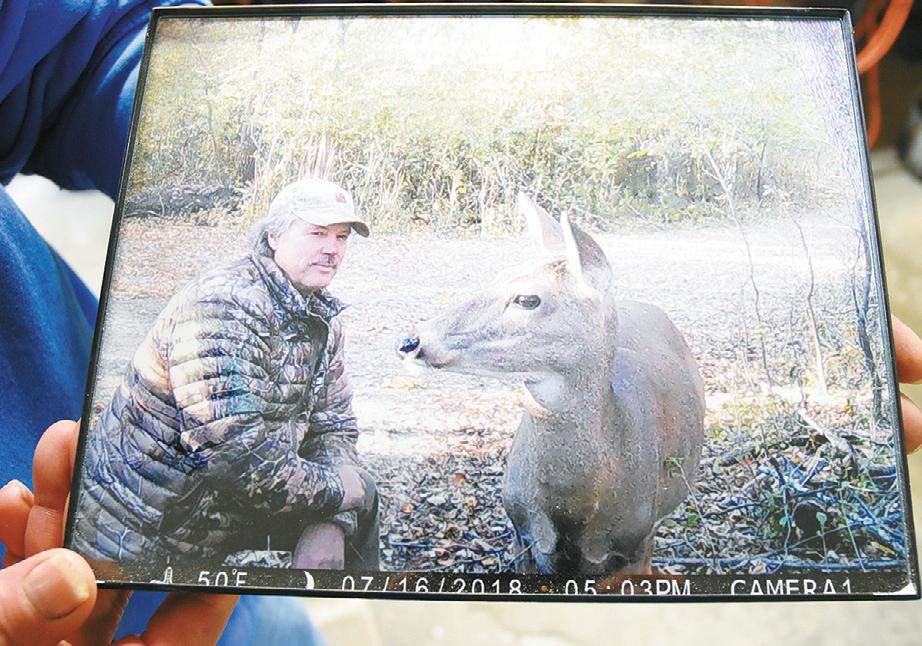
A trail camera photo shows Greg Johnson with one of the friendliest deer he has ever known July 16, 2018, near Spicer. Feeding wildlife is one way Johnson gets inspiration for his taxidermy projects.






TUESDAY, JUNE 18th






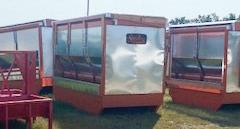

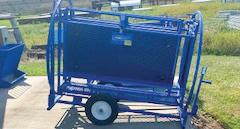

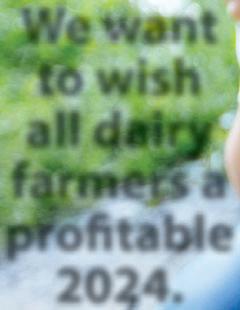





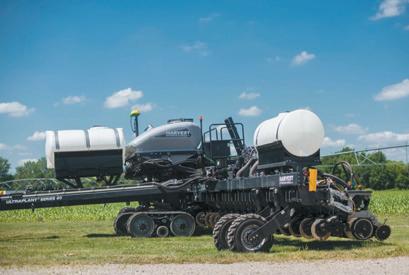


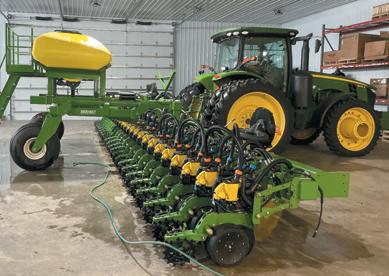









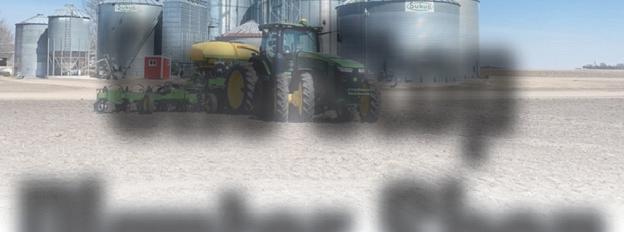





















































Dylan Terning takes a break during milking on May 9 at a farm near Dassel.Terning started milking his own herd August 22 of 2022.
DASSEL — Dylan Terning began milking his own herd of 60 Holstein cows on Aug. 22, 2022, at the age of 22.
“The biggest reason I didn’t start earlier than I did was because I was too scared to call the creamery,” Terning said. “You know, you have this big dream of doing this your whole life, and you did it your whole life, but not on your own. I did not want to get the answer ‘no.’”
Terning has been milking cows on his family’s farm since the age of 7. He worked at a local dairy for over
three years and left there to prepare the barn for his own herd of cows.
“I didn’t milk cows for about 45 days and that was too much for me,”
Terning said. “I joke that was me testing out retirement.”
Terning said he never considered a career other than milking cows. When he first began his herd, he housed them at Deerview Dairy in Willmar and shipped milk to First District Association in Litchfield. When he branched out on his own on rented land, the creamery began picking up his milk from the new location with no issues.
“I like the flexibility now,”
Terning said. “I can manage my time better. When I was working, we would do crops until two in the morning, then have to be in the barn to milk the cows a few hours later.”
Terning page 16



• Afternoon to evening shifts, until close 7pm (weekdays)
• Must be willing to work a rotating weekend schedule
• Heavy lifting, 50# or greater
• Operating machinery
• Assisting customers
FULL-TIME AG SERVICE TECHNICIAN
• Afternoon to evening shifts, 11am - 7pm (weekdays)
• Must be willing to work a rotating weekend schedule
• Heavy lifting, 50# or greater
• Operating machinery
• Assisting customers
• Feed/equipment delivery
• Grain loading/unloading
• Tire repair/mounting
• Hydraulic hose repair
• Pay based on experience
NIGHT
• Night shifts (weekdays + weekends)
• Must be willing to work a rotating weekend schedule
• Valid license + CDL required + tanker endorsement
• Daily milk pick-up and drop-off
• Cleaning trucks + tanks after deliveries
• Keeping equipment up to regulations
• Pay based on experience
Full-Time Ag Service Director
• Must be willing to work a rotating weekend schedule
• Heavy lifting, 50# or greater
• Receiving physical inventory
• Assisting customers
• Hydraulic hose repair
• Pay based on experience
•
• Flexible Schedule
• Opportunities to advance
• Additional benefits
Time Positions Only
• Have previous experience
• Maintain good character and judgement
• Are motivated and hardworking
• Are eager to take on new challenges and projects
• Have or can obtain a CDL*
*Required for Milk Truck Drivers
*Preferable for Truck Bay Members
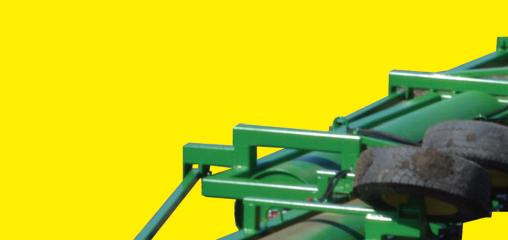


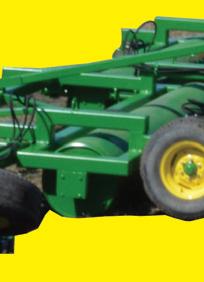



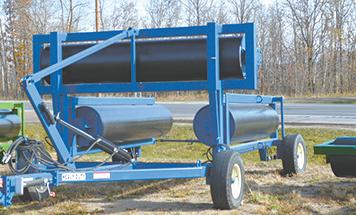



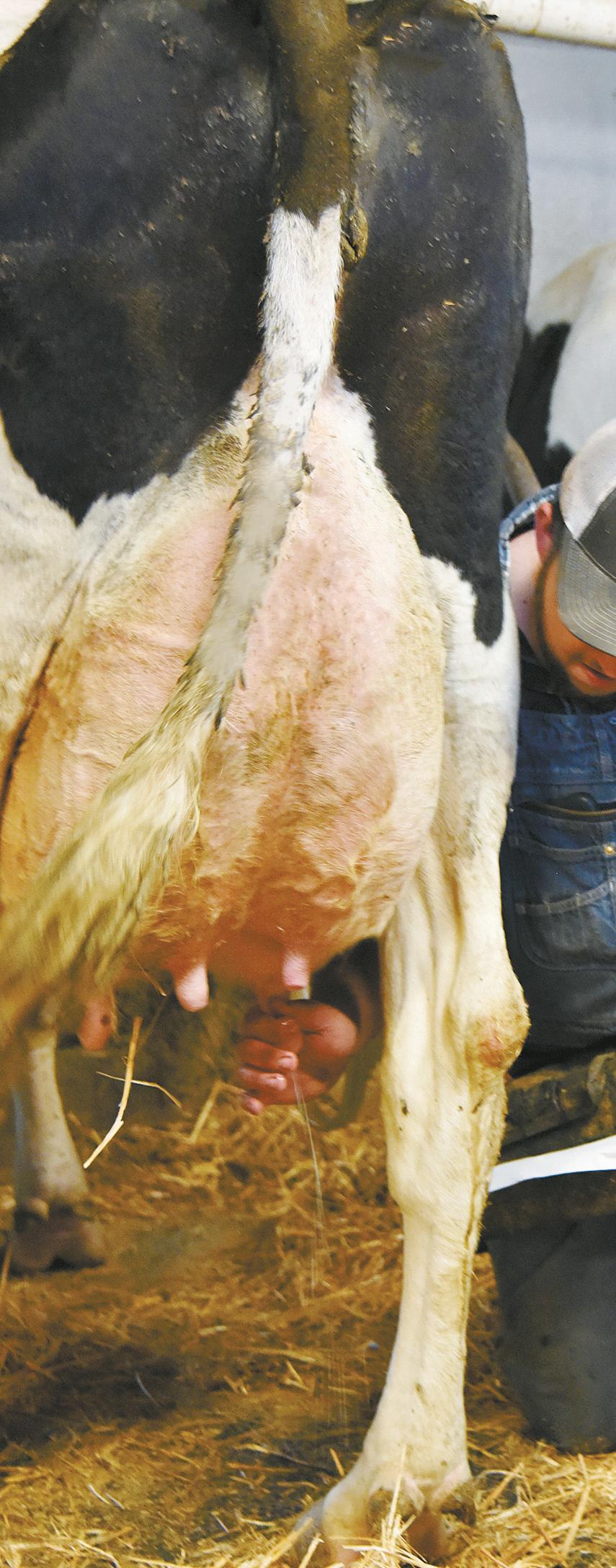
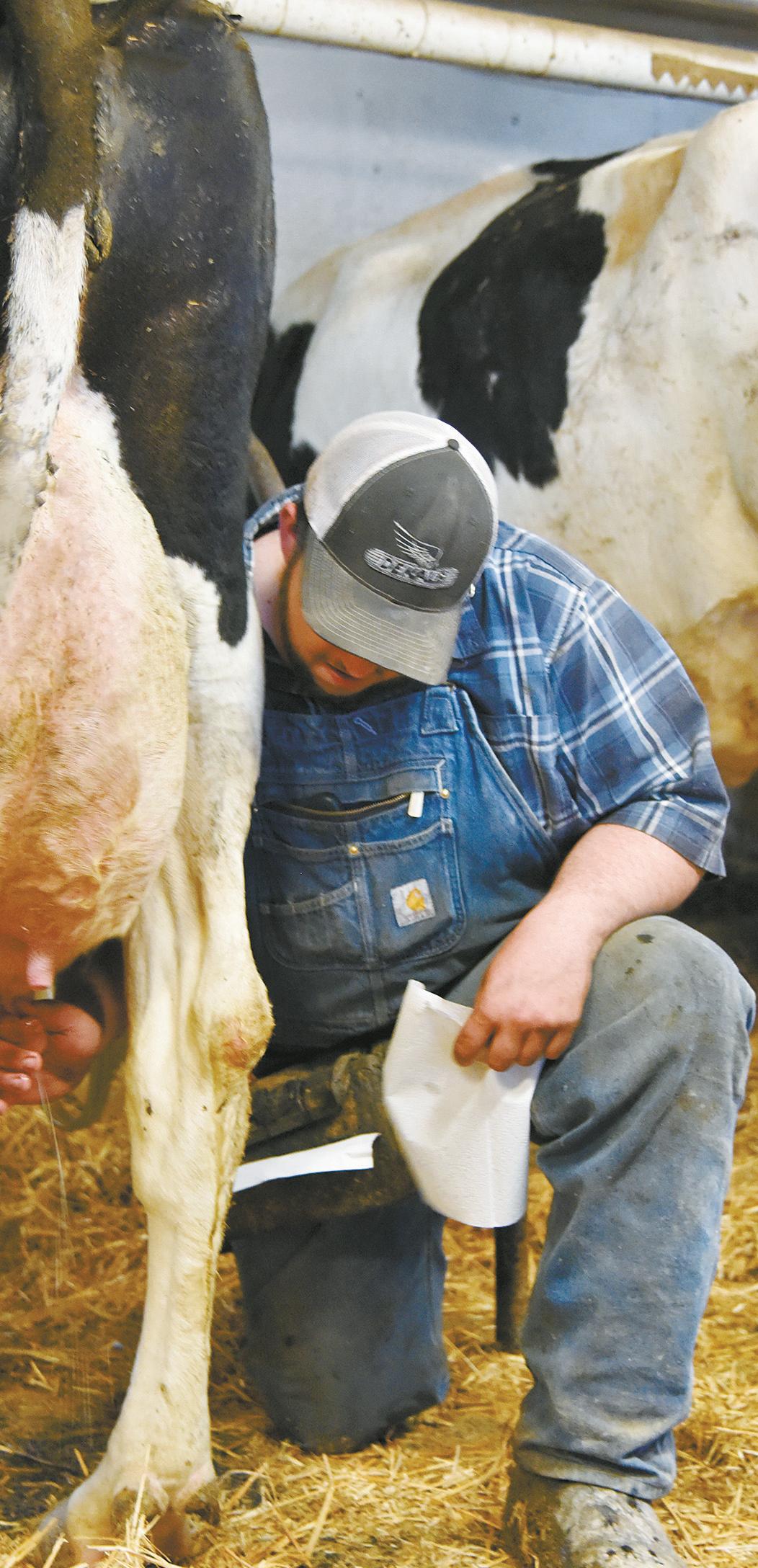


Terning, however, did not mind working for someone else and even commented on how it was a sad day leaving the farm after working there for so long.
Along with his dairy operation, where the cows are milked in a tiestall barn, Terning runs 600 acres of hay, corn, wheat and soybeans and manages a herd of
about 40 beef cow-calf pairs each year. When the pastures dry up in the spring and the cows can roam, Terning runs his dairy heifers on pasture with a bull.
When it comes to breeding, Terning only uses Holstein bulls.
“At home, we were big into crossbreeding,” Terning said. “Now, I do a lot of breeding for type for bigger-body cows that will last”
And, while he said his family focuses on components, he wants to focus on longevity and would like to milk his cows for 10 years rather than finding replacement heifers. That’s not to say he doesn’t also care about milk components.
The 24-year-old’s herd is now averaging 70 pounds of milk a day with tests of 3.9% butterfat and 3.2% protein.
While there are some things Terning did not carry with him from his family’s farm, there are others he deems extremely important.
“My biggest thing is family,” Terning said. “Growing up on the farm, family was there every day.”
Terning spent his childhood at Ahlgren Brothers, owned by his grandparents. The farm is now run by his uncle
Rick Ahlgren. There were many days Terning would be in the company of his little brother, Tate.
“When Tate was younger and I was still at home I drug him around (the farm),” Terning said.
When I was gone for four years, I was worried he would no longer be interested in milking, Terning said. But he’s back helping, and I hope he doesn’t leave.
When Terning was working toward getting his own barn, he was not alone when in making the decision to rent from Don and Peter Settergren. The Settergrens’ brother, who is a pastor, approached Terning one day after church and told Terning that his brothers were expecting him to stop by one day.
“There’s tons of support and encouragement coming here,” Terning said. “The biggest thing was knowing what my long-term plans were. The Settergren brothers were comfortable letting me in.”
This barn was a prime location for Terning because it was close to home.
Milking on his own is about much more than a paycheck to Terning. The land he’s renting allows the Settergren family to spend time with the cows, something that was long in their history and is once again an
Terning page 17












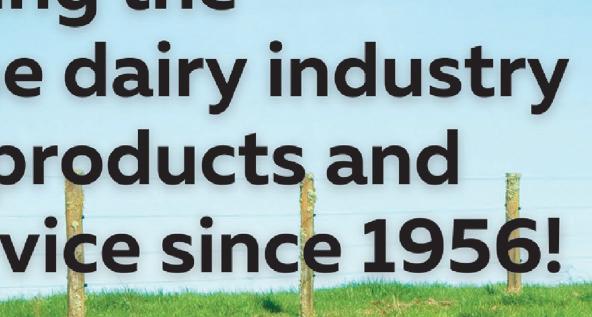




option with the rent agreement.
“It’s nice to know you are keeping the history going,” Terning said. “Plus, you get done at the end of the day and this is on you, this is your
reward, you finally got it.”
Even though Terning has had a lifetime of work with cows and a path that led him to his dream, he questioned himself along the way.
“I know people have had harder roads, but there were a few times I was wondering if it was worth it,” Terning said. “In the end, it fell into place.”

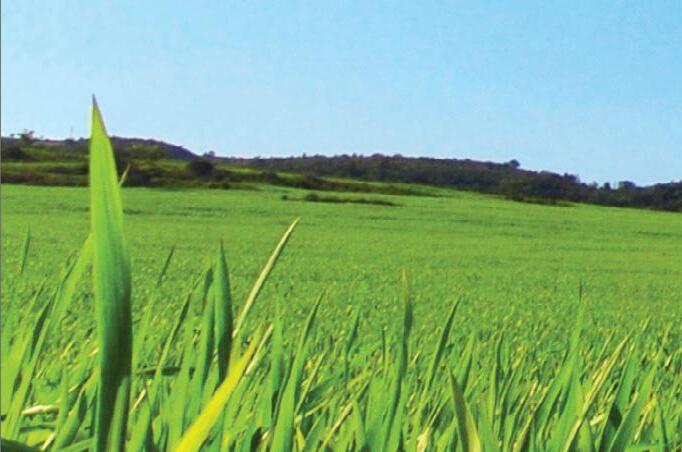
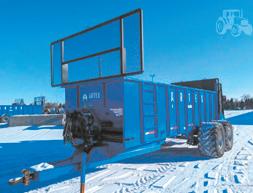
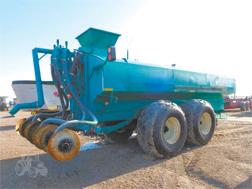
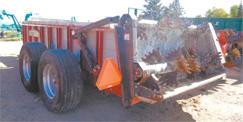
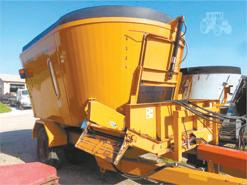


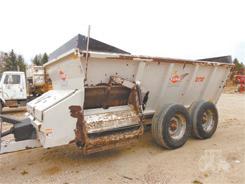




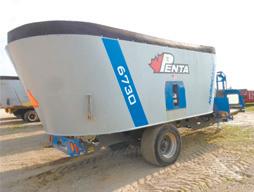




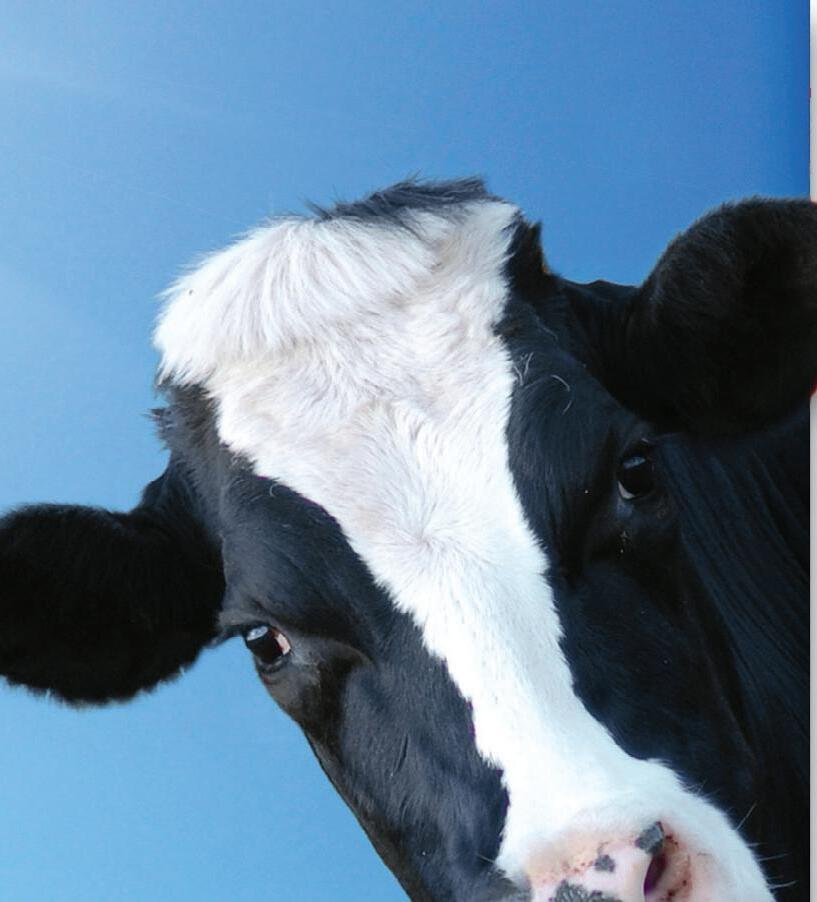












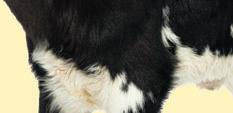




















 PHOTO BY SARA EISINGER
PHOTO BY SARA EISINGER
Homeowner Kathy LaBounty (left) and Yellow Flower Watering & Garden Services garden sitter Kayla Johnson (right) decide which hanging baskets they would like based on color scheme and sunlight May 10 at Tree Top Nursery & Landscaping in Sauk Centre. Johnson cleans gardens, removes rubbish, plants, identifies and pulls weeds, prunes trees and bushes, rakes, waters and offers professional gardening advice.

SAUK CENTRE —
Kathy LaBounty and her family own a home on a little more than one acre of land in rural Sauk Centre, but no one knew how to make that yard pop for summer.
Fortunately, garden guru Kayla Johnson answered her new client’s call on Friday, May 10. It was exciting news for Johnson, who launched a new garden-sitting business called Yellow Flower Watering & Garden Services this spring.
“I hope to give people confidence in knowing they can come to me for planting and garden maintenance,” Johnson said. “I really just want people to be confident in the plants they are buying and planting, especially trees. Everyone wants
to plant trees. They are just afraid they won’t be able to maintain them. They are afraid they will end up dying or something will happen to them.”
The garden sitter cleans gardens, removes rubbish, plants, identifies and pulls weeds, prunes trees and bushes, rakes, waters and offers professional gardening advice. She also comes with a surplus of resources to meet any outstanding landscaping or topiary needs.
“Kathy has an area, here, she wants to put some plants in, so she is going to want help deciding what to plant,” Johnson said. “We will discuss the care for them. She also has a couple of perennial gardens she will need help maintaining.”
LaBounty has a sunny piece of land that faces west and said she trusts Johnson to help her make decisions.
“I don’t trust myself necessarily,” LaBounty said. “I know what is pretty,
LaBounty page 20






































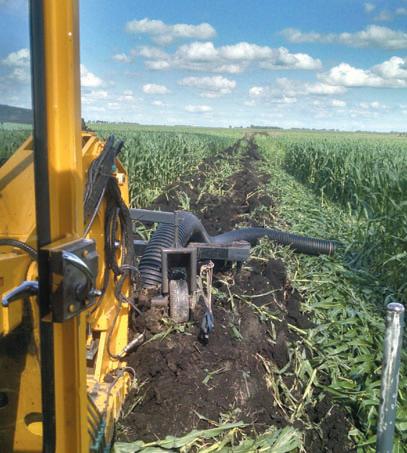



Sauk Centre.

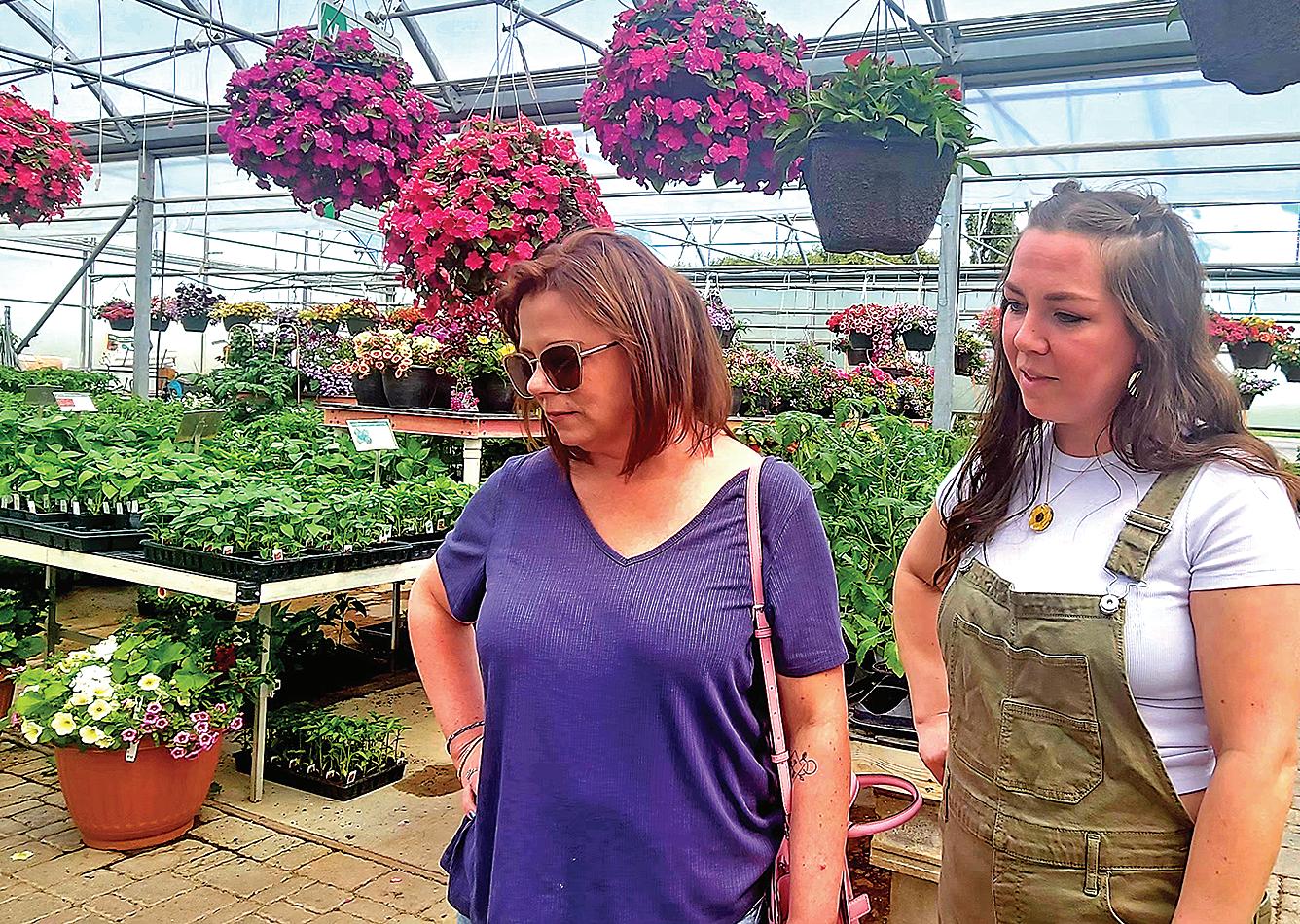
“I have had a lot of customers come through, asking for people to come water for them or help plant stuff, but we were so busy throughout the year,” Johnson said.
Many of the people Johnson encountered were out-of-towners or snowbirds looking for extra help maintaining gardens.








but that doesn’t mean it is going to survive. It is very helpful when you have someone local who knows the area and plants well enough to say, ‘Yes, I would plant this,’ or ‘No. I wouldn’t plant that.’ It gives a little confidence to what I’m doing.” Johnson unearthed joy in watching little flowers bloom as a kid. That passion flourished, leading her to care for plants at Tree Top Nursery & Landscaping in


Great Plains keeps raising the bar when it comes to seeding performance in a box drill. The legendary BD7600 features an industry-leading box capacity, a durable, field-tested design, and the innovative Great Plains Metering System for greater accuracy across all seed types, from traditional to cover crops.
People were asking Johnson for assistance planting trees, shrubs and flowers.
“I am doing this on my own so people can have someone to go to,” Johnson said. “I can help them water and maintain gardens, so they gain the confidence to plant trees, shrubs, perennials and whatever they are looking for.”
“They are not going to be here all of the time to care for their gardens,” Johnson said. “The people who are not here year-round are the ones I would like to cater to more. They are the ones wanting to plant nice trees out on their properties, whether summer homes, lake homes and vacation spots.”
LaBounty page 23

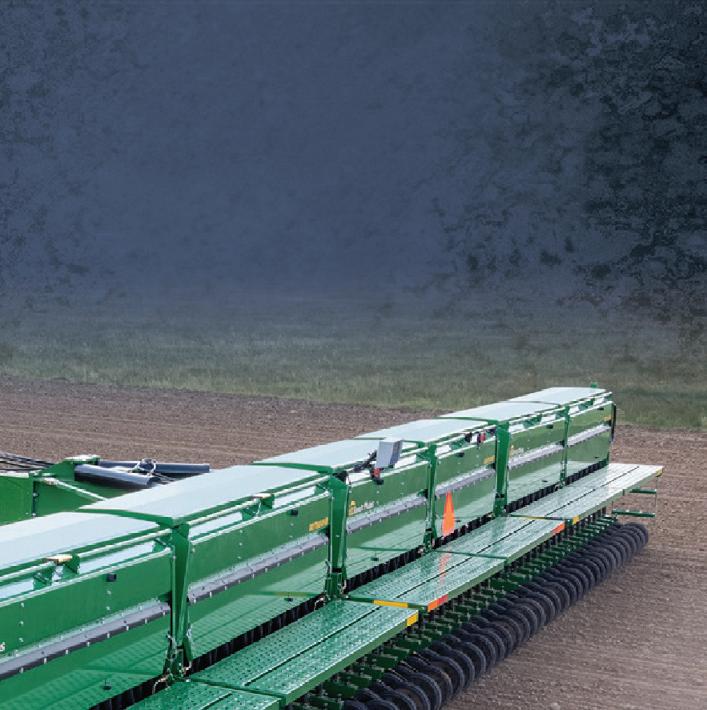









Bedouin dish
• 5 pounds of lamb
• 32 oz Plain Greek yogurt
• 1 ½ cups of rice
• 1 tsp parsley
• 1 medium onion
• 1 tsp paprika
• 1 tsp cumin
• 1 tsp black pepper
Slice 5 pounds of lamb meat into cubes. Boil in a large pot of water until the meat is soft or browned. Season meat with black pepper (to preference). Reduce heat and cook for up to an hour, do not drain. Add one medium minced onion. Pour plain Greek yogurt into the boiling pot of meat. Add seasonings (paprika, cumin, pepper) as desired. Boil 1 ½ cups of rice in a separate pot. Add 1 tsp of parsley to rice. Mix meat with rice and serve.
• 1 pound beef sirloin
• 2⁄3 cup olive oil
• ½ chopped onion
• 1 tbsp salt
• 2 cans of tomato sauce
• 3 tbsp tomato paste
• 12 ounces okra
• 1 ½ tbsp coriander
• 1 tbsp black pepper
• 2 jalapenos
• ½ tsp cumin
• 6 garlic cloves
Place 1-pound beef sirloin cut into cubes in a pot. Stir in 2⁄3 cup olive oil, ½ chopped onion, 1 tbsp salt and 6 minced garlic cloves. Let meat brown. Reduce heat. Stir in 2 cans of tomato sauce, 3 tbs tomato paste, 12 ounces okra, 1 ½ tbsp coriander, 1 tbsp black pepper, 2 sliced jalapenos and ½ tsp cumin. Simmer until meat is fully cooked and flavors blend.
Palestinian traditional dish
• 4lb whole chicken
• 2 tsp salt
• 2 tsp black pepper
• 2 tsp allspice
• 2 tsp cinnamon (optional)
• ¼ tsp turmeric
• 2 cups rice
• 1 cauliflower head
• 1 onion, 1 celery stick, 1 carrot, 1 can peas, 1 russet potato
• Cilantro flakes
One whole chicken (4lbs) boiled in a large pot of water until 80% cooked at 132 F or above. Rub in 2 tsp each: salt, black pepper, allspice and cinnamon (optional). Bake or grill cauliflower head with diced, one of each, optional vegetable (onions, celery, carrots, peas, potatoes) in olive oil. Boil two cups of rice on the side. Drain rice, add ¼ tsp turmeric. Add ½ tsp each: cinnamon, allspice and salt. Top the 80% cooked chicken with rice and vegetables in its large pot (do not add water). Boil until the water evaporates. Flip upside down on a separate dish to create a cake-like appearance. Sprinkle flakes of cilantro over the Maqluba (optional).
• 1 can chickpeas
• 1/3 cup of tahini
• 2 tbsp extra-virgin olive oil
• 1 finely-diced garlic clove
• 2 roasted garlic cloves
• 5 tbsp water
• ½ tsp salt • 1 tsp lemon juice
• ½ tsp ground cumin
Open 1 can of cooked chickpeas and empty into a bowl and mash. Mix in: 1/3 cup of tahini, 2 tbsp extra-virgin olive oil, 1 finely-diced garlic clove, 2 roasted garlic cloves, 5 tbsp water. Add as desired: ½ tsp salt, 1tsp of lemon juice and ½ tsp ground cumin.
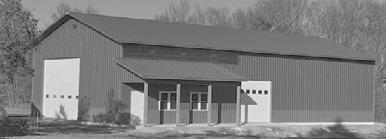






• 2 pounds ground beef or lamb
• 6-quart pot lined with bone-in pieces of meat: poultry or lamb chops (preferred)
• 1 jar grape leaves
• 1 1/2 cups of uncooked, mediumgrain rice
(optional)
Drain grape leaves. Rinse 1 1/2 cups of uncooked, mediumgrain rice. Add 2 tsp: Lebanese spices, salt, pepper, cinnamon and melted butter stick (8 tablespoons) to uncooked rice. Mix uncooked rice with 2 pounds of raw ground beef or ground lamb. Line a 6-quart pot with bone-in pieces of meat: poultry or lamb chops (preferred)Rinse grape leaves, cut off any stems. Lay a few grape leaves over the meat pieces and set aside. Boil the remaining grape leaves on low heat for five minutes or until softened. Lay out grape leaves, vein up. Roll approximately 1 tsp uncooked ground meat and rice mixture into grape leaves, loosely. Place stuffed leaves in rows over the 6-quart pot of bone-in meat pieces. Add broth and lemon juice until the 6-quart pot is nearly filled. Add twice as much broth as lemon juice. Dice 3 garlic cloves, add to the 6-quart pot. Cover the pot and boil over medium heat. Simmer for another 90 minutes, until liquid absorbs and grape leaves are tender. Dish must be fully cooked. Sprinkle flakes of cilantro over the Lebanese Stuffed Grape Leaves (optional).
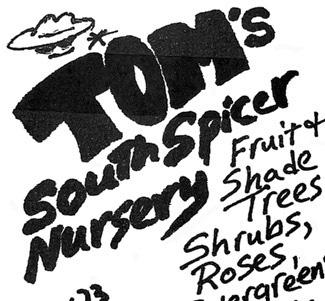













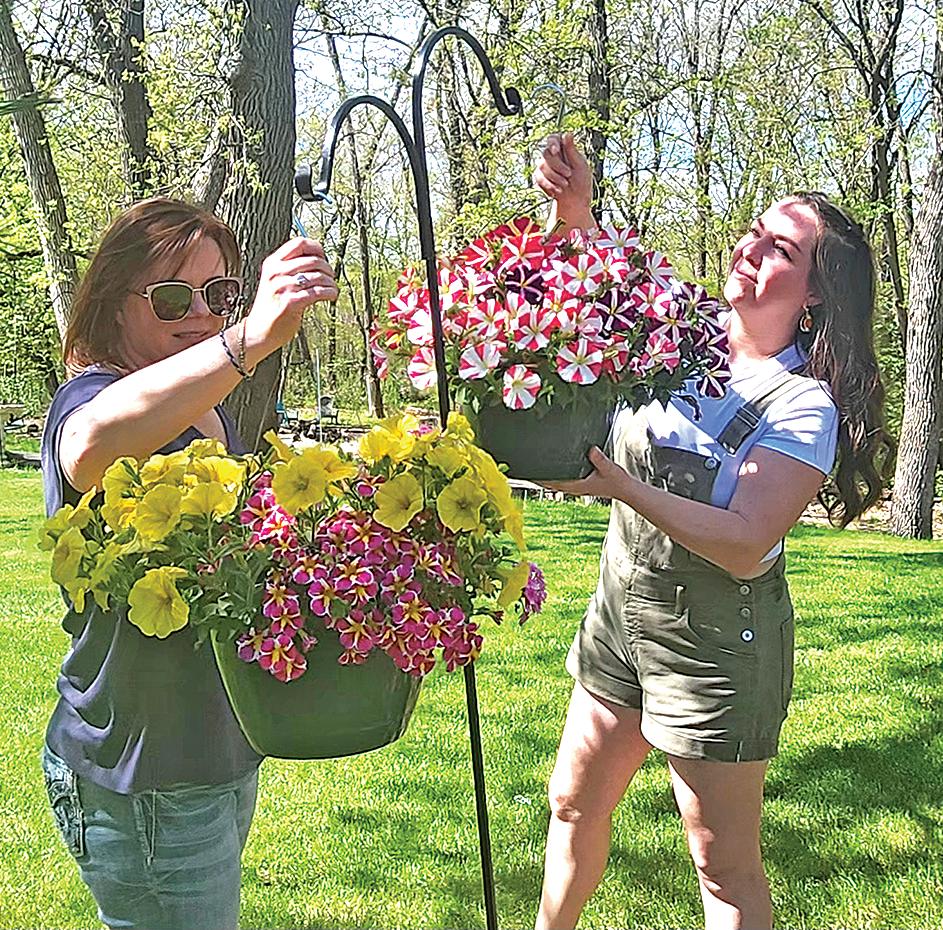
Kathy
and Yellow Flower Watering &
hang baskets May 10 at LaBounty’s home near Sauk C
supports gardeners who are unfamiliar with planting, have diabilities or are vacationing.
from page 20
Johnson and LaBounty took a walk together in the country to Tree Top Nursery & Landscaping, where they purchased lively and fragrant petunias. They hung the vibrant baskets around Labounty’s property.
“Petunias love sunshine,” Johnson said.
According to the University of Minnesota Extension, petunias require up to six hours of sunlight. Petunias achieve the liveliest blooms under full sunshine. The more shade they receive, the fewer flowers the plant will produce.
“Kayla is not far away, so for her to be able to water my two perennial gardens when we are out camping in the summer would be great,” LaBounty said.
“They can get a little dry. I am worried they won’t make it much longer if I am not careful.”
Johnson shared gardening confidence with readers by offering some basic gardening tips:
Water regularly, especially in dry and high heat.
Watering thoroughly once a week encourages deeper roots and saves
“I am doing this on my own so people can have someone to go to. I can help them water and maintain gardens, so they gain the confidence to plant trees, shrubs, perennials and whatever they are looking for.”
-
water versus daily sprinkling. Collect rain when possible. Make sure to choose plants that match the growing conditions. An example would be sun versus shade-loving plants. And keep in mind the soil conditions

Homeowner Kathy LaBounty carries flowers under the sunshine on Friday, May 10. La hired a helper to get landscape ready for summer.






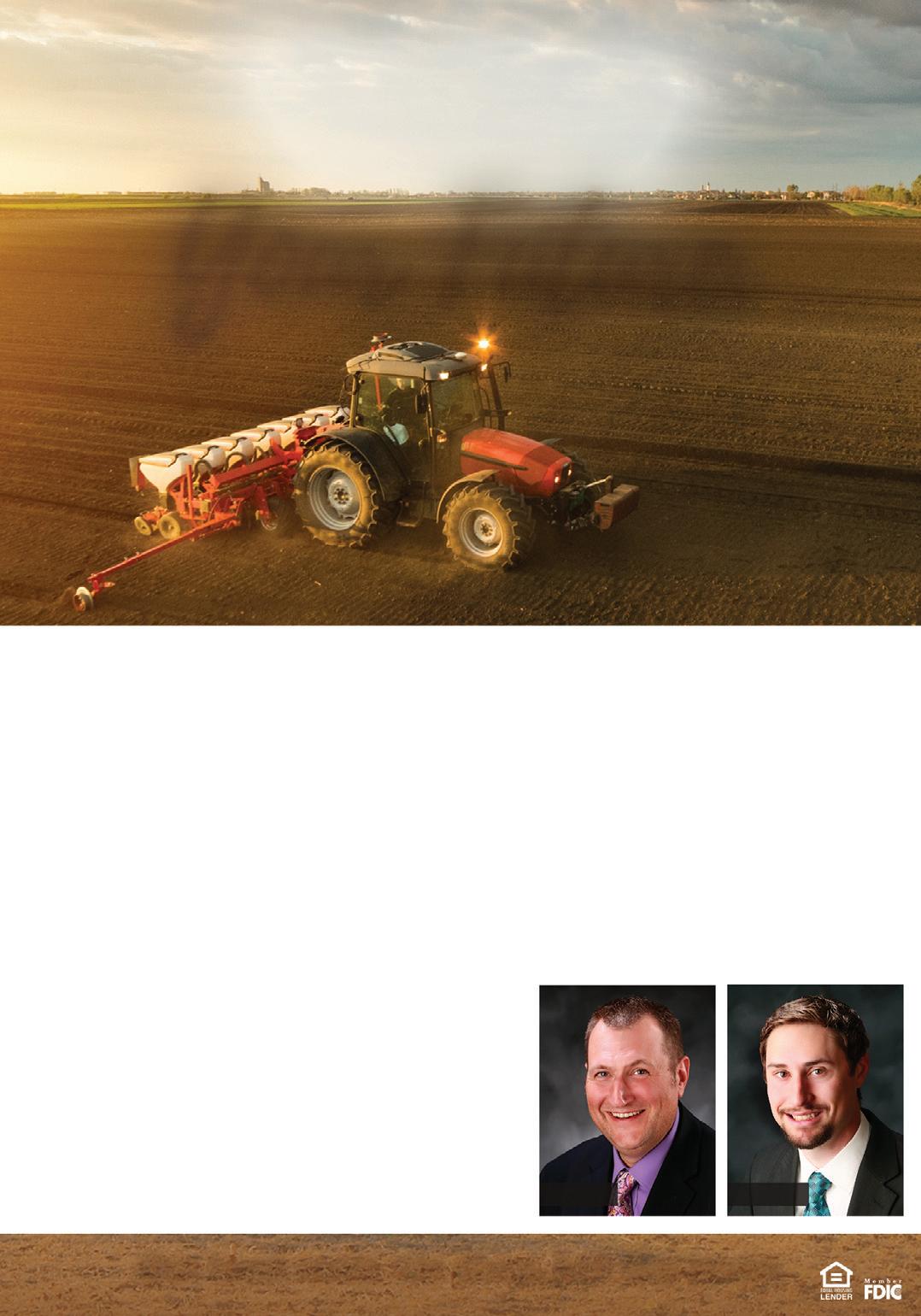























Sonstegard specializes in fertility, conventional practices
BY EMILY BRETH | STAFF WRITER
HOFFMAN — For 49 years, rope halter and sleeve at his side, veterinarian Gregg Sonstegard has been helping farmers and animals alike. Though technology has changed, Sonstegard’s ways have not.
Sonstegard owns Nordic Veterinary Service in Hoffman, and his work has ranged from routine herd checks of beef and dairy cattle to fertility programs to helping at sale barns.
“I still palpate the cows,” Sonstegard said. “Most of the time I can do just as good of a job with my arm as an ultrasound. That’s a big change to help the industry, but I never really used it.”
Working with the fertility of animals, Sonstegard said, has been one of the most constant and enjoyable things throughout his career.
“I did a lot of fertility work over the years,” Sonstegard said. “I had over 80 herds in a fertility program. It’s a lot of work, but it’s routine. Most days I’d be checking cows.”

The first time Sonstegard repaired a displaced abomasum, he was working on a fertility program in Pelican Rapids at a farm he still works with today.
Sonstegard said the advancement of antibiotic protocol that prevents antibiotics from entering the milk supply chain is an important one for dairy farmers.
Sonstegard has made many lasting connections between farmers and other veterinarians.
Gregg Sonstegard looks over the clinic’s resident cat April 4 at Nordic Veterinary Service in Hoffman. Sonstegard enjoys working with farmers in fertility programs and at one time had over 80 herds in programs.


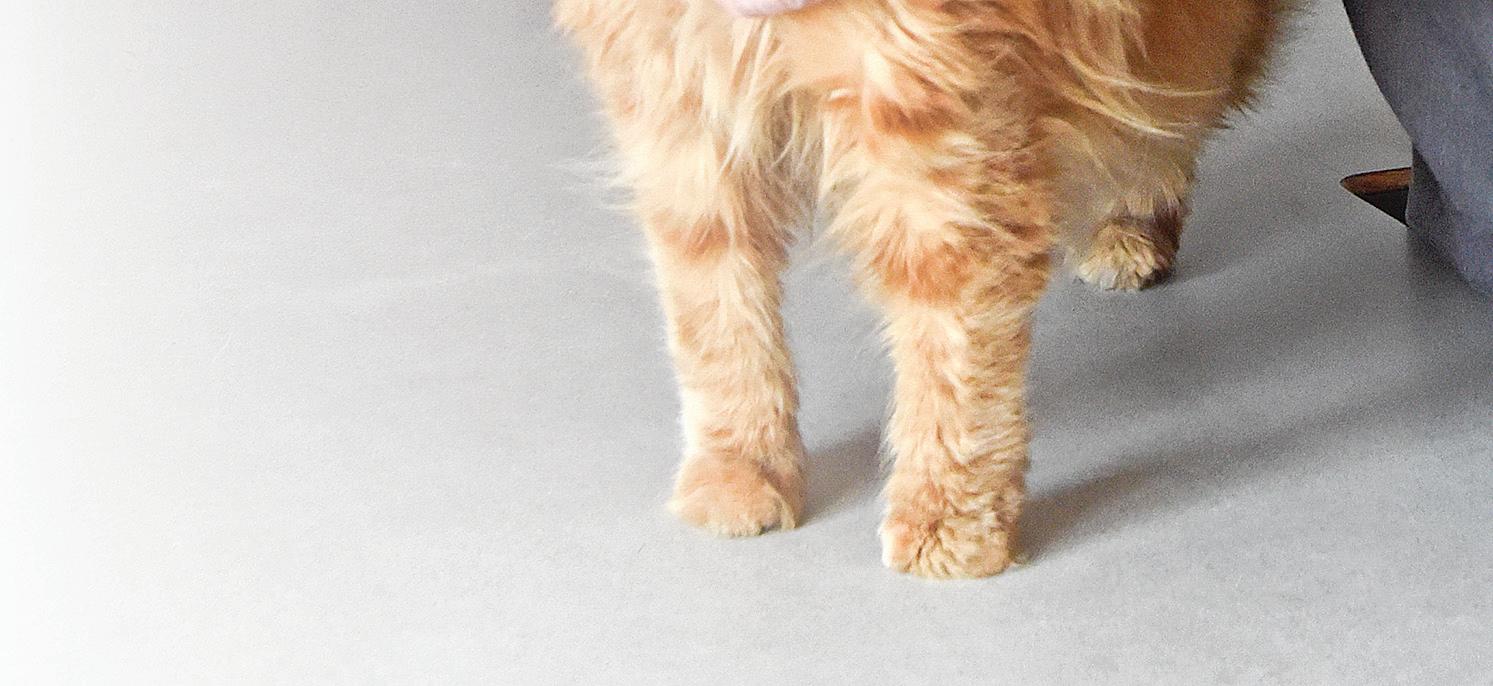

“There’s a shortage of large animal vets in areas, so we try to help out some other veterinarians when it gets busy,” he said.
As farmers have left the industry, Sonstegard said he has seen a reduction in large animal veterinary work on farms. His staff has dwindled to two office workers who handle the scheduling and administrative work.
“Here at the clinic, we do small animals too,” Sonstegard said. “It keeps me busy, and I enjoy it quite a bit.”
Sonstegard page 26
Gregg Sonstegard stands next to Jenny Stormo April 4 at Nordic Veterinary Service in Hoffman. Stormo has worked with Sonstegard for 26 years, scheduling small animal visits and administrative work.
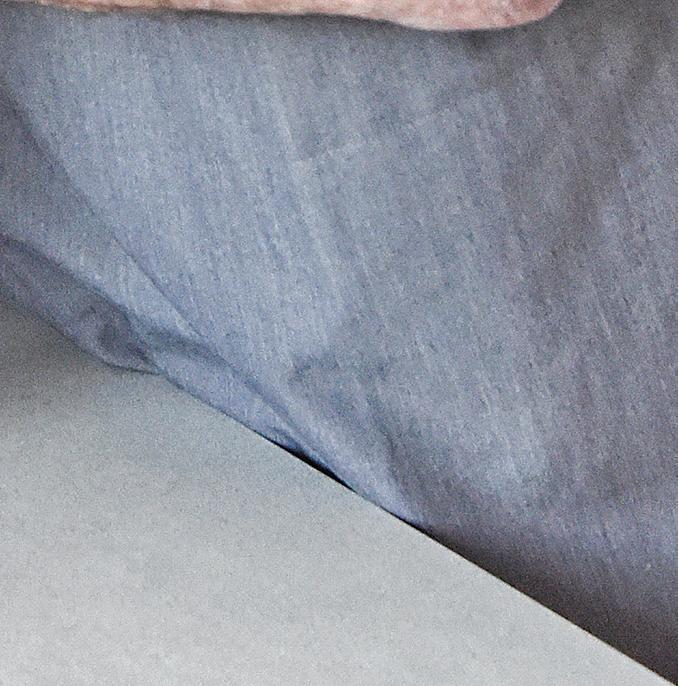
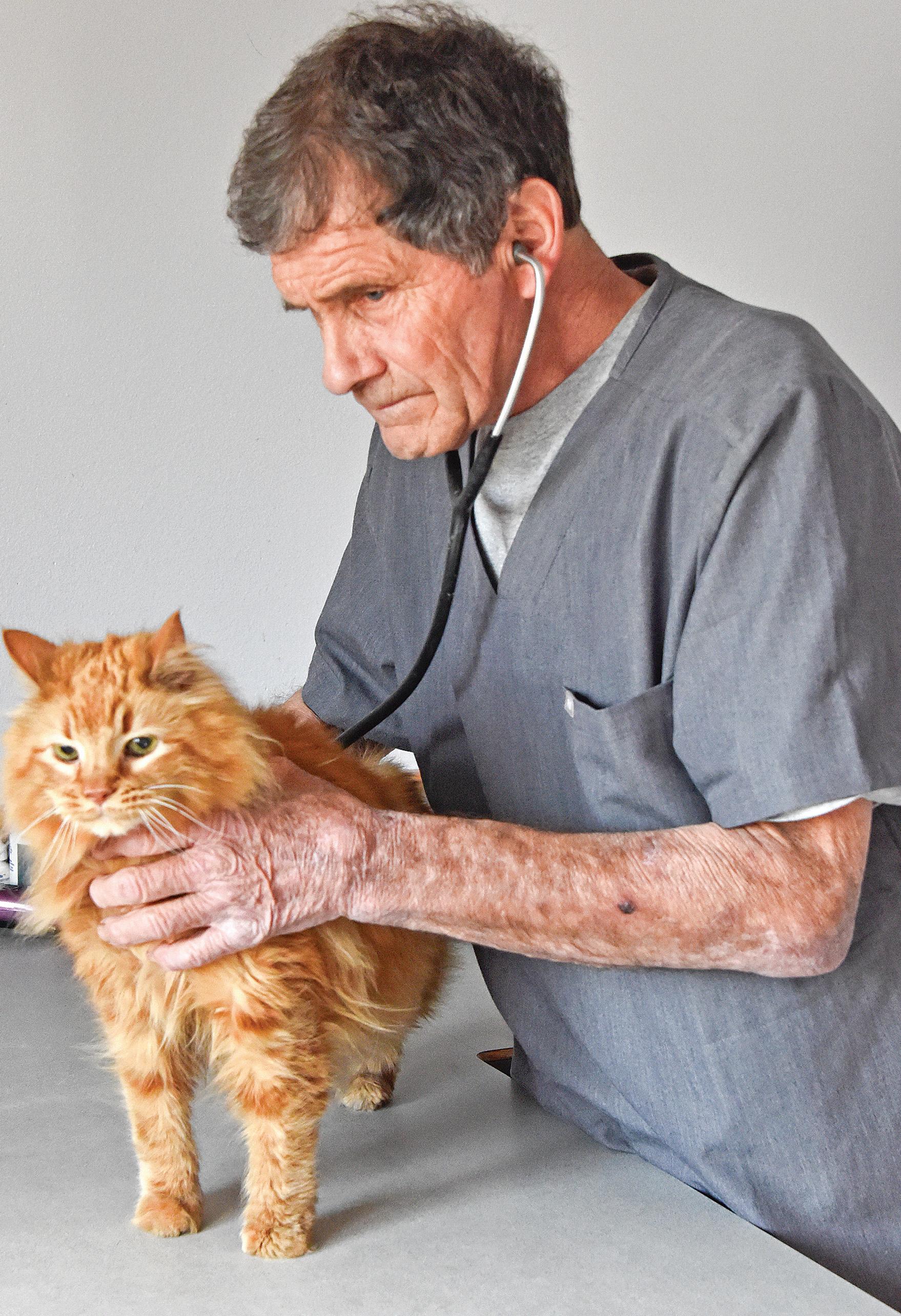








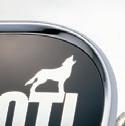


























































































Through the years, Sonstegard received a lot of calls in the middle of the night.
“(I did) whatever it took to get it done. It didn’t bother me because I liked doing it. Plus, a lot of the time I was working into the night anyway to get work done.”
“(I did) whatever it took to get it done,” Sonstegard said. “It didn’t bother me because I liked doing it. Plus, a lot of the time I was working into the night anyway to get work done.”
His wife, Mary, has been supportive of his career every step of the way.
“At one point, she had to do some driving for me when I got night calls,” Sonstegard said. “The kids went with me
one or two times during the day because there was something they wanted to watch.”
Sonstegard has known since his senior year of high school that he wanted to be a veterinarian. Sonstegard worked on his parents’ hobby farm, raising goats, sheep, turkeys and cattle. He started riding around with a local veterinarian during high school.
During Sonstegard’s first year in college, he took courses to prepare him for veterinary school. After three years, he was accepted
into the University of Minnesota College of Veterinary Medicine and graduated in 1975. He became licensed in Minnesota and North Dakota.
Sonstegard worked in Watertown and Pelican Rapids before working for Lake Region Veterinary Center in Elbow Lake. In 1980, Sonstegard purchased the clinic in Hoffman and started Nordic Veterinary Service. Throughout the following years, Sonstegard bought the clinic in the neighboring town of Kensington and has had many others work with him prior to the decline in farm numbers.
“I enjoy working with cattle,” Sonstegard said. “I also enjoyed working with mushers at dog sled races. I did
Sonstegard page 27












Gregg Sonstegard (left) looks over Evan Quick’s cow April 4 at Quick’s farm near Hoffman. Sonstegard has been a veterinarian for close to 50 years.















work at the Beargrease sled dog race in Duluth and the Iditarod race in Alaska.”
Sonstegard said his work varies greatly. He has worked with a dairy farm producing A2 milk as well as organic dairy farms that were in the process of changing their herd health management.
“For the sales barn, I pregnancy check cows and make sure they have official identification tags and prepared health certificates,” Sonstegard said.
Over the years, Sonstegard has worked at barns in Fargo, North Dakota, and Fergus Falls, Perham, Long Prairie and Belgrade. Through the exotic sales held once a month in Long Prairie, he has worked with a variety of animals, including llamas, pot belly pigs, chickens, birds, goats, sheep and pigs.
Sonstegard has spent decades of work on the road and gone through many trucks, putting as much as 450,000 miles on some of them.
“It’s what I wanted to do,” Sonstegard said. “I like doing things for other people who appreciate and are thankful for me helping out, whether it’s an emergency or a routine checkup.”















